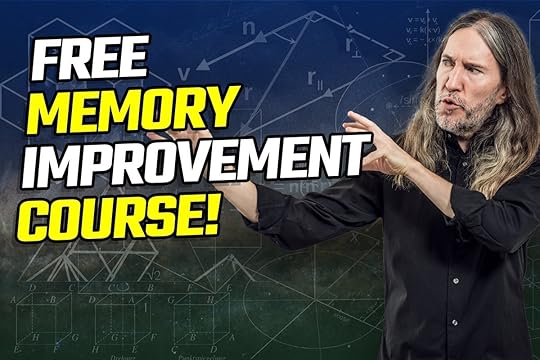Anthony Metivier's Blog, page 11
May 25, 2022
Memory and Intelligence: Are They Connected?
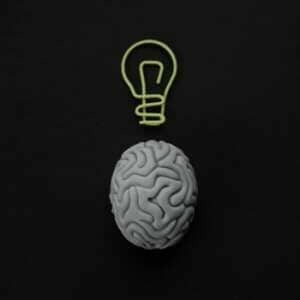 Are memory and intelligence connected?
Are memory and intelligence connected?
Of course they are.
After all, how could you ever display your intelligence without using your memory to speak?
But let’s dig deeper.
Working memory and intelligence are connected in some interesting ways.
And when you understand these, you can use your natural memory to boost your own intelligence quickly.
Even better:
You can help others do the same.
Ready?
Let’s get started!
The Link Between Memory and Intelligence ExplainedIntelligence comes down to drawing upon remembered experiences to plan and make decisions.
Indeed, it is a sign of high intelligence when individuals take time to plan before making snap decisions.
Of course, as neuroscientist David Eagleman points out in The Brain: The Story of You, we don’t always have time to plan out our decisions.
To help us see how the intelligence centers of the brain light up when faced with logical problems that need to be decided quickly, neuroscientists study people’s brains as they consider the trolley problem.
But here’s something interesting:
In these scenarios, it is typically not intelligence, but emotions that guide how people make decisions.
Emotional Intelligence and MemoryAccording to researchers, emotional memory always involves physiological responses. These can range from happiness to anger whenever our episodic memory brings up something from the past.
But the idea that emotions are not part of our intelligence is suspect at best. Of course we draw upon past emotional experiences to help us make decisions.
Not only that, but there are many subconscious mind exercises that seek to extract past emotions so that intelligent decisions can be made. Without using your emotional memory, it’s hard to elicit positive emotions required for motivation.
Music also involves both emotional intelligence and memory. To be able to memorize song lyrics and perform with gusto draws upon both.

Plus, actors often draw upon emotions and memory that utilize many aspects of intelligence. They do this to memorize their lines and perform them.
Can You Have a High IQ and be Forgetful?You can have a high IQ and suffer from low working memory. Or, you can experience the reverse.
This is because many things can cause working memory issues. You might be tired, distracted or simply not paying attention.
The truth is that everyone forgets, even if an individual has done a lot of work to improve their IQ. No matter how smart you might be on an average day, things can get in the way of both your memory and your intelligence.
Keep in mind too that IQ typically involves tests that rely upon abstract thinking and reasoning in response to symbols.
My Best Memory ResourcesIf you really want to experience better intelligence, it’s pretty simple. Set specific learning goals and use memory techniques to boost your understanding and recall.
Here’s a list of my best resources for learning these skills quickly:
Memory PalaceMajor SystemPAO SystemPegword MethodRead FasterCritical thinking exercisesBy combining memory and reading techniques with critical thinking, you’ll automatically boost both your recall abilities and intelligence.

The reason this mix works is because we often cannot understand certain things until we get them into memory.
Yet, so many people persist in putting things aside and giving up. That’s simply not necessary. If you would just spend a bit of time committing things to memory, soon you’ll start to understand.
It’s like this in language learning as well. Many polyglots agree that you’re better off committing vocabulary and phrases to memory so that you can understand grammar more quickly. It seems like studying grammar is the thing to do, but it’s far from the smartest path.
Memory Vs IntelligenceAt the end of the day, we need multiple levels of memory in order for our intelligence to work.
These levels go beyond the episodic memory we talked about above. We also can include:
Procedural memoryAutobiographical memoryLong-term memoryContext-dependent memoryVisual memoryAnd of course, there are even more categories to explore.
The more you know about memory, the more intelligent you can be about setting goals to improve it, write about it or simply enjoy thinking about it.
So what do you say?
If you’d like the ultimate guide to memory improvement, grab this FREE Memory Improvement Kit:
It will help you rapidly learn the best techniques I know for improving your intelligence so that you have wonderful things worth remembering.
May 24, 2022
How to Create A Memory Palace: A Proven Memory Palace Technique Approach
 In the modern world of omnipresent information access, memorization using a Memory Palace is almost a thing of the past.
In the modern world of omnipresent information access, memorization using a Memory Palace is almost a thing of the past.
And this shift has occurred very quickly.
Little more than a decade ago, it wasn’t uncommon that a person had to memorize a sizable list of phone numbers belonging to partners, siblings, parents and close friends.
Now Many Of Us Forget Our Own Cell Phone Numbers!
Despite this fact, there are situations in the modern day that still require memorization.
Perhaps phone numbers and historical facts are better left to Google. But in reality, not everything can and should be searched via a computer.
A notable example which is becoming conversant is “language” – which requires that you memorize a huge amount of vocabulary and grammar. Until now, there isn’t a technology effective enough to replace human ability to learn and master a language.
https://www.youtube.com/watch?v=l5-Yr...
In the past, having to memorize information was not optional because information wasn’t easily accessible. Up until the 19th century, paper was expensive, especially for quantities required to make a book. To add to it was that not many people could read and write so the ability and need to memorize and recall information was critical.
Yours Free: A Private Course With Cheat Sheets For Becoming A Memory Master, Starting From Scratch.>>> Click Here For This Special Free Offer.
Why The Greeks Adored the Memory Palace Technique
That’s why a powerful memorization method was adored by the ancient Greeks. This technique is used today by memory experts to commit huge amounts of information to mind.
The only problem is this:
An abundance of terminology has emerged that all means essentially the same thing. For example, you’ll here some memory experts call the Memory Palace technique the Mind Palace. This term appears to come from the world of Sherlock Holmes, and it’s not really accurate.
After all, this detective is a fictional character, and we’re here to optimize our memory based on what is really scientifically possible, not fantastically described. Personally, I also dislike the idea of associating these techniques with crime, and Sherlock Holmes is a drug addict. Finally, the whole notion that the information is in our ‘mind’ is obvious, but also a deviation from the fact that this technique uses what is already in our memory to help us remember more.
You might also hear this called the Journey Method, the Roman Room or a related term like the Pegword Method. All of these have one thing in common: They are using space itself as a mnemonic.
The fact that all of these techniques draw upon your spatial memory explains why “Memory Palace” is in fact the better term: No matter what you call the technique, it’s a lot easier to use if you are basing it on space that is already remembered and easily recalled. This feature was noted by Thales of Miletus who lived during the pre-Socratic Era. He pointed out that “space is ultimate because it contains all things.”
And thanks to Thales and a long line of people who have used these techniques, we have an abundance of Ancient Greek facts and instructions that have been handed down, anyone can learn to use a Mind Palace at any time.
One such contemporary memory expert, used it to memorize Pi to over 100,000 digits. Our own MMM student Marno Hermann has used a Memory Palace to memorize 1200 digits of Pi.
This memorization technique is called the Method of Loci, or more commonly the “Memory Palace”. It is a memorization method that not only has held the test of time, but has been shown to be effective through modern-day studies.
You may even have heard of the Memory Palace without realizing it because it has been featured in multiple books and media.
The Silence Of The Memory Palace
In Fiction And Movies
For example, the technique was employed by the fictional serial killer Hannibal Lecter in the novel series Hannibal written by an American author Thomas Harris.
In several passages of the novel, Lecter was described as mentally walking through an elaborate Mind Palace to remember facts. That’s the basics of the Memory Palace.
Although relatively unknown, this method can be a game-changing technique for people who want to improve their ability to retain large amounts of information.
You might be a student trying to master information for an exam, or an aspiring polyglot trying to learn Italian. You might be aging and finding it more difficult to recall routine information.
Whatever memorization challenge you face, the Memory Palace is a proficient way to finally help you achieve your goals.
How the Memory Palace Evolved
The origin of the Memory Palace was traced to ancient Greece. As mentioned earlier, in the olden days, people had higher incentives to create effective methods of retaining information. Writing and writing materials were difficult to access.
The Memory Palace was introduced to the ancient Romans and the world via Greek rhetorical treatises.
The Roman Cicero described the Memory Palace in his writings on rhetoric, called De Oratore.
In De Oratore, Circero claims that his Mind Palace method originated from the Greek poet Simonides. Simonides was commissioned to recite a poem praising a group of nobles at a banquet. After the recitation, Simonides left the hall and shortly after the edifice collapsed and killed all the people in the banquet.
The bodies were so badly mangled that not even close relatives could identify the corpses of their own people. However, Simonides was able to identify each of the corpses by name based on their location. Based on this experience, Simonides devised the Memory Palace (Bower 1970).
Whether this story is reality or myth, it illustrates the basic idea behind the Memory Palace. Luckily, you don’t have to attend a tragic banquet to master the technique and start using it to improve your information retention.
For a true story that will rivet you from beginning to end, check out The Memory Palace of Matteo Ricci.
How to Create a Memory Palace
The basic idea behind the Memory Palace is to associate pieces of information with a location that you are very familiar with. A prime example would be of your home.
If you’d like some free Memory Palace worksheets and a concise memory improvement video course, do this now:
If you close your eyes right now, you can probably picture your home with a high degree of detail. You know where the furniture is found, what colors the walls are, and even where small objects are placed.
The Memory Palace has to do with associating information with specific areas of that familiar location.
As you walk through that location, you place pieces of information that you wish to memorize in specific areas. When you want to recall the information, you go through that mental route, and the information will be easily accessible.
The technique is made more effective when you add surprising or out-of-the normal features to the information.
For example, assuming you would like to memorize this sequence of words:
herodrillspacecraftmusicYou could imagine yourself at your front door, with a hero standing next to you. Here you’ve made an association between your door and a hero.
You can increase your ability to memorize and retain this by making the memory more distinctive or unusual. For example, you could imagine the hero opening the door for you, or banging on it before you enter.
You then walk down your hall, and before your feet is a drill. To increase the power of this imagery, imagine that it is turned on and you have to leap to avoid being hurt.
You then turn the corner and see a spacecraft flying out of the window leaving behind itself a trail of glitter.
Finally, you sat down on the couch, and as your bottom touches the cushion, your favorite song starts playing. You might even imagine the word “music” written on the cushion before you sit.
[image error]Quick Memory Palace Drawing by Anthony Metivier (Berlin apartment)
To get started creating a Mind Palace, do this now:
Draw a floor plan of a familiar location.Create a journey that does not lead you into a dead end.Make sure that your journey is linear so that you don’t create confusion by crossing your own path.Don’t over clutter your first Memory Palace.Number each station and create a top-down list to help you mind remember the journey better. Optional: Use a Magnetic 00-99 P.O.A. to assign an image to each Magnetic StationUse the Memory Palace as quickly as possible with information that will improve your life.Use the Memory Palace to invoke the Primacy Effect and Recency effect for each Magnetic Station by using the Serial-Positioning Effect.Create more Memory Palaces and repeat the process, always taking care to memorize information that makes your life better professionally and personally.The Definitive Guide To Reusing A Memory PalaceA lot of people ask me about using their Mind Palace a second or third time.
It is possible, but it can be a bit finicky. To explain, please check out this thorough guide on the topic:
https://www.youtube.com/watch?v=Umt-i...
As you can see, not even the most skilled memory experts reuse Memory Palaces. If you set yourself up correctly, it’s not really necessary.
That said, doubling up does make for great brain exercise, and that’s usually the way I treat the practice. I think it might have helped me experience a breakthrough with aphantasia, actually.
But what this question has taught me the most over the years is that many students of memory improvement put the cart before the horse. They worry about advanced skills before they’ve mastered the fundamentals – advanced skills that the pros have already determined might be great, but aren’t really worth using.
Likewise, people sometimes worry about what will happen if the furniture in their Memory Palace moves around.
I understand why they are concerned, but it’s the kind of question that just doesn’t arise when you have the fundamentals mastered. Please make sure that you devote yourself to the loci method thoroughly and completely. It will serve you well for the rest of your life.
Yours Free: A Private Course With Cheat Sheets For Becoming A Memory Master, Starting From Scratch.>>> Click Here For This Special Free Offer.This Memory Palace Technique Is Not Necessarily Visual
As you can see, the technique seems to require a vivid visual imagination. A lot of people get this wrong, confusing iconic memory with the fantasy of photographic memory.
However, when done correctly using all of the Magnetic Modes, you can memorize a very large amount of information relatively quickly without necessarily seeing the Memory Palace in your mind.
Here’s an infographic to teach you all about the different ways that your brain perceives information:
Keeping the full range of your Magnetic Modes in mind, you can use any home or location with which you are familiar.
You can even use small areas, such as the inside of a broom closet. You can even use your own body, attaching information to different limbs.
Just keep in mind that you don’t necessarily have to see the Memory Palace. You can feel it, hear it, taste it, smell it and even just think about it.
If any of this seems odd, continue reading to be convinced of how seriously well this technique works. You might want to see just how well the Memory Palace can work in combination with Mind Mapping too.
The Science behind the Memory Palace
Many studies have been conducted to analyze the effectiveness of the Memory Palace. It’s all based on the scientific fact that your brain and spatial memory perceive space as a kind of image.
Check out this lecture with memory expert Stephen Kosslyn for more information about how that works:
Cool, right?
The answer is a resounding “yes!”
Yours Free: A Private Course With Cheat Sheets For Becoming A Memory Master, Starting From Scratch.>>> Click Here For This Special Free Offer.Incredible Experiments with Memory Palaces and Students
Even better:
In a study conducted by J. Ross and K. A. Lawrence in 1968, the Memory Palace was tested on a group of 40 students.
The students were asked to memorize a list of 40 items. They were given only a few minutes to do so, yet were able to recall an average of 38 out of 40 items upon immediate recall.
The next day, the average recall rate dropped to 34 out of 40 items – still very impressive!
Nature Magazine did an investigation of so-called superior memorizers (SM) in a 2002 paper (Maguire et al). They studied a group of 10 champions who had competed in the World Memory Championships.
The researchers first wanted to know if these SMs had some special natural advantages that other people do not have, such as a higher IQ.
They first found out that SMs did not have exceptional cognitive abilities. In fact, they did not even show superior performance on visual memory tasks (for example, the recall of faces).

The paper further investigated the brain structure of these SMs, and found out that their brains were not significantly different from average brains (Maguire et al 2002).
The scientists also performed functional MRI scans to see if the SMs brains were activated differently when actively memorizing.
Here the SMs brains differed from normal brains – SM’s brains activated particularly when memorizing (Maguire et al 2002).
Significantly, scientists found out that SMs all used mnemonic techniques to aid in their memorization. Nine out of ten of these subjects were specifically using the Memory Palace (Maguire et al 2002).
Note: Some of people call it the Mind Palace method, but the basics are the same.
Plus, the different activation patterns observed were associated to the fact that SMs used mnemonic techniques, namely the Memory Palace, to memorize information (Maguire et al 2002).
No Need For A Huge IQ To Use A Memory Palace!
It’s not that SMs are smarter or have bigger brains than the rest of us. It’s that they use mnemonics, and specifically the Memory Palace to memorize semantic information.
That is the secret behind their impressive abilities. And because these SMs had been practicing the technique for a little over 11 years on average, they were really good (Maguire et al 2002).
This suggests that anyone with average abilities can use this technique to improve his/her memory.
And once you know the drill, it’s really just a matter of spending some time with a few solid Memory Palace training exercises. Like these:
Even if you are not seeking to learn large amounts of information, the Memory Palace still has something to offer. There is even evidence that the Memory Palace can help maintain a healthy brain during old age.
As MMM student Sunil Khatri has explained, the Memory Palace is also great for language learning, including the difficulties of Japanese.
Benefits of the Memory Palace
Technique for the Aging Brain
As we age, our memories become weaker. In elderly people, this might lead to a frustrating situation where they are struggling to recall routine information.
There has been much study on age-related memory loss, but so far not many effective solutions to this problem.
Happily, the Memory Palace holds promise in aiding the enhancement of memory in the aging brain.
One study conducted in Norway in 2010 employed expert instructors, who taught the Memory Palace to 23 volunteers. The average age of these volunteers was 61 (Engvig et al 2010).

After training, these volunteers were able to memorize a list of 30 words in sequential order in under 10 minutes – impressive!
A control group, a set of volunteers of the same average age, sex and education was included in the study. They were not trained in the Memory Palace technique, and were instructed to memorize the list as well (Engvig et al 2010).
Afterwards, both groups were released into the world to live normally for eight weeks.
When they returned to the study, researchers challenged both groups to a recall task.
The ResultsThey first flashed a list of 15 unrelated words, each for only a second. The volunteers were then instructed to recall the words in order.
Researchers then showed them a list of 30 words. Half of these words had been displayed in the initial 15 word list while the other half was completely new.
The volunteers were asked to pick out words that had previously appeared and also identify their correct position in the first list (Engvig et al 2010).
Volunteers trained in the Memory Palace outperformed the non-trained volunteers for recognizing the position of the words (Engvig et al 2010).
The study also measured the amount of brain thinning that occurred in the trained versus untrained groups of volunteers. Normal age causes the brain to shrink.
The brain of the individuals showed thickening in areas of the brain which were key for visual abstract memory (Engvig et al 2010).
What should we conclude from these findings? It’s clear that using a Memory Palace makes for great brain exercise.
Yours Free: A Private Course With Cheat Sheets For Becoming A Memory Master, Starting From Scratch.>>> Click Here For This Special Free Offer.
Why The Memory Palace Technique Is Not Snake Oil
This research and others like it have shown that the Memory Palace is not snake oil.
Sadly, most adults in the modern world are not encouraged to use their imagination. It might therefore be slightly challenging for someone newly using the technique to really get into it, especially if they don’t have the kind of Memory Palace example you can get when you take my free memory improvement course.
However, after practice, many find out that this memory technique is not only effective in memorization, but is also very engaging. Certainly more engaging than the traditional rote memorization technique, especially when you use Magnetic Note Taking as part of the process.
With some practice, you’ll be impressing all of your friends and family with how good your memorization has gotten in no time. And if it’s still not clear how and why this incredible tool works so well, here are 5 Memory Palace Examples that make everything clear.
Memory Palace References & Further Resources
Bower, G. H., “Analysis of a Mnemonic Device: Modern psychology uncovers the powerful components of an ancient system for improving memory” American Scientist, Vol. 58, No. 5, pp. 496-510, September–October 1970 Web. 21 Jan. 2016..
Engvig, Andreas, Anders M. Fjell, Lars T. Westlye, Torgeir Moberget, Øyvind Sundseth, Vivi Agnete Larsen, and Kristine B. Walhovd. “Effects of Memory Training on Cortical Thickness in the Elderly.” NeuroImage 52.4 (2010): 1667-676. 1 Oct. 2010. Web. 22 Jan. 2016.
Fan, Shelley. “Can a Mnemonic Slow Memory Loss with Age?” Scientific American Blog Network. 20 Mar. 2014. Web. 22 Jan. 2016.
Maguire, Eleanor A., Elizabeth R. Valentine, John M. Wilding, and Narinder Kapur. “Routes to Remembering: The Brains behind Superior Memory.” Nature Neuroscience Nat Neurosci 6.1 (2002): 90-95. Web. 22 Jan. 2016.
Want to Become a Mnemonics Dictionary? 5 Powerful Secrets Revealed!
May 18, 2022
14 Of The Best Critical Thinking Books That Come Packed With Examples
 Critical thinking books are a dime a dozen.
Critical thinking books are a dime a dozen.
However, few of them come packed with examples.
Even fewer come with exercises.
Examples and exercises are important because critical thinking is not just something you learn.
It’s something you develop through practical application.
Here’s another problem that might be frustrating you if you’re looking for the best critical thinking books:
A lot of them are either irrelevant, “dumbed-down” for the mass market, or already abandoned by their authors.
For example, the famous Thinking, Fast and Slow on just about every list has big problems.
Its author, Daniel Khaneman has agreed that several entire chapters need to be removed in a future edition.
Why?
The reproducibility problem. Many of the studies he refers to weren’t scientifically valid.
But critical thinking is based on reproducible models.
So on this page, let’s dig into a comprehensive list of critical thinking books that won’t go out of date.
The 14 Best Critical Thinking Books Packed With Examples For Improving Your MindAs you go through these examples, consider your specific goals.
As you’ll see, each of these examples are related, but each has different strengths.
You’ll want to beef up on each of these areas, but as you gather your collection, I suggest you start with where you currently feel you need the most help.
One: Scientific Critical ThinkingIn Critical Thinking for Better Learning: New Insights from Cognitive Science, Carole Hamilton helps you understand how the brain creates categories in the mind.
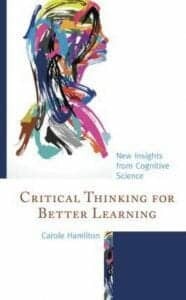
Knowledge of how your mind works helps you tap into how your memory deals with examples and analogies that can improve your thinking skills.
Some of the best parts of this book teach you:
How to study topics thoroughly so that you can think critically about them.How to develop creative analogies so you can see the “shape” and dynamics of larger topics. Threshold concepts, which are “the central, defining truths in a given discipline, the ideas that open a gateway to deeper understanding.”Why some ideas are obvious to certain people but take others a long time to learn.As an example of how this book helped me, when I was working on my Art of Memory project, it reminded me to read both the historical summary and also the specific books about memory during that period. This is what Hamilton means by knowing the “shape” of a topic.
Other great aspects of this book include its points on:
How beliefs can distort factsWho really benefits and who suffered from environmental damage in the worldThe concept of opportunity costHow to assess critical thinkingIt gives examples of each and concludes strong with its best tip:
Study real problems and how they were solved, and then recall these frequently to test your memory for accuracy about the details.
Two: A Jargon Free Toolkit
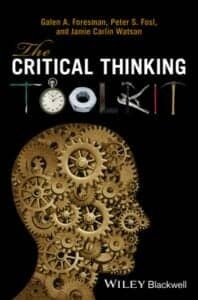
Critical thinking often involves a lot of complex terminology. You have to learn about antecedents in logic and the concept of paraconsistencies.
But if you’re just beginning and don’t have a Memory Palace, such terms can be hard to learn and remember.
Enter The Critical Thinking Toolkit.
This book provides a wonderful introduction with examples from:
RhetoricPsychologySociologyPolitical scienceThree: How To Think About ArgumentsWe all get into arguments.
That’s not a problem, but the ways we use language while arguing often causes more problems than necessary.
Enter The Uses of Argument by Stephen E. Toulmin.
 There are many reasons many of us fail to be persuasive. Worse, we are unaware of the reasons we are so easily persuaded.
There are many reasons many of us fail to be persuasive. Worse, we are unaware of the reasons we are so easily persuaded.
But in this excellent book, Toulmin shows you:
What it means to make a valid argumentHow to lay out valid argumentsThe difference between working logic and idealised logicHow that validity must be intra-field, not inter-field (so that you approach critical thinking comparatively)It boils down to this:
Arguments have patterns and we can learn to perceive those patterns.
One pro tip in this book is to find ways to see logic and critical thinking as historical.
When you know how logic has changed over time, you’re able to note the patterns that shape how we communicate and use them better.
That’s just one benefit. Here are 11 more benefits of critical thinking you can expect after reading the books on this page.
Four: Validity In Your ThinkingI’ll never forget hearing The Amazing Kreskin discuss hypnosis. He said:
“Hypnosis is nothing more than the acceptance of a suggestion.”
 In other words, it’s just persuasion. And since we’re persuaded all the time, there’s a strong suggestion that our behavior is being shaped outside of our awareness more often than we think.
In other words, it’s just persuasion. And since we’re persuaded all the time, there’s a strong suggestion that our behavior is being shaped outside of our awareness more often than we think.
If you don’t have much time to learn how this is happening to you, I suggest Critical Thinking : A Concise Guide by Tracy Bowell and Gary Kemp.
This book’s strength is how it helps you determine whether an argument is valid.
To do so, the authors teach you the connection between critical thinking and symbolic logic, informal logic and formal logic.
You also learn how to determine which parts of an argument are relevant. You get real world examples with detailed commentary on each.
A v Hoare is one of my favorite examples. In it, you learn about how the amount of detail shapes our perceptions. You also learn how to determine what information is valuable to properly assess the context and shape of an argument.
Five: How To Stop Thinking Against YourselfI used to think very darkly.
Little did I know that I was using my thoughts against myself, practically making it impossible to see opportunities.
Then I discovered The Luck Factor by Richard Wiseman.
This book not only goes through numerous examples of how people use cynical thinking against themselves. It also gives powerful exercises that help your critical thinking skills see opportunities your own thinking patterns might be hiding from you.
Six: Understanding Your Personality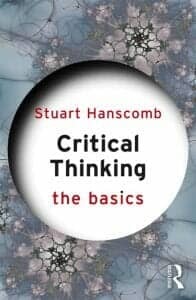 Few books in this field approach the topic with personality types in mind.
Few books in this field approach the topic with personality types in mind.
That’s why I recommend Stuart Hanscomb’s Critical Thinking: The Basics.
Looking at your personal dispositions can help you avoid many of the problems created by emotions and cognitive biases.
You may even want to go further by looking into the OCEAN model to help better understand how your personality might help or hinder your thinking abilities.
Either way, Hanscomb’s book is great. Pay extra attention to the final chapter. It’s pack with additional examples of fallacies you’ll want to avoid.
Seven: Simple, But Not “Dumbed Down”

Critical Thinking Skills For Dummies, like many books in the “dummies” series is actually quite valuable.
Its biggest strengths are:
Strong examples of false dichotomiesHow to avoid logical pitfallsExamples of key argumentsPay special attention to the final chapter and its list of “arguments that changed the world.” These are interesting and useful case studies.
Eight: Thinking On AutopilotOne of the most challenging critical thinking examples to work through involves the topic of free will.
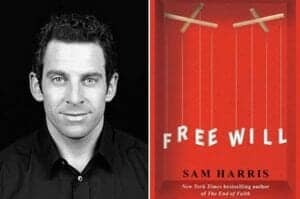
My favorite book on the topic is also one of the most hotly contested.
But it’s the examples in Free Will by Sam Harris that really bring it all together.
And although Daniel Dennet strongly disagrees with its thesis, going through the for and against will give your thinking abilities a stretch.
Without a doubt, contending with the issue of free will is one of the best ways you can practice critical thinking. It will also give you a better understanding of human consciousness too.
Nine: The Humpty Dumpty Of Thought[image error]Thinking from A to Z by Nigel Warburton is a fantastic encyclopedia of terms and concepts you’ll want to be familiar with.
As the cohost of Philosophy Bites, a fantastic philosophy podcast, Warburton has packed this book with excellent critical thinking tools to up your game.
Some of my favorites include:
Weasel Words
“Advertisers who declare the food they are selling to be a ‘healthier alternative’ need to specify precisely what the food is healthier than and why. If they cannot do this, then the weasel words ‘healthier alternative’ are meaningless – mere rhetoric”
Humptydumptying
Giving private meanings to words in common use
‘When I use a word,’ Humpty Dumpty answers, in rather a scornful tone, ‘it means just what I choose it to mean — neither more nor less.’
Ten: The Power of Analysis Check out Critical Thinking Skills: Effective Analysis, Argument and Reflection by Stella Cottrell.
Check out Critical Thinking Skills: Effective Analysis, Argument and Reflection by Stella Cottrell.
This book proves a number of self assessment activities, including several sub-skills, such as identifying similarities and differences.
It also includes material on:
Note taking in a critical mannerCritical writingReflective thinking tips as a mental disciplineMultiple models of reflective thinkingBonus practice activitiesIf you do any kind of reading and writing, this book is a must.
Eleven: Improve Your Research SkillsIf you do anything involved in research, you know just how difficult interpreting data accurately can be.
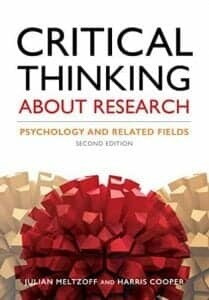 This is where Critical Thinking About Research: Psychology and Related Fields by Julian Meltzoff and Harris Cooper will help you up your game.
This is where Critical Thinking About Research: Psychology and Related Fields by Julian Meltzoff and Harris Cooper will help you up your game.
In this book, you’ll learn all about:
How to seek trustworthy knowledgeHow to understand the role of hypothetical questionsHow samples are chosen and validatedAspects that threaten the validity of a research projectThe role of ethics in researchExamples of multiple studies in different fields of interestThere are a large number of practice articles too. These will help you better engage with scientific reporting you encounter in the media.
Twelve: Avoiding ErrorsIf you’re like me, you probably prefer to avoid mistakes whenever possible.
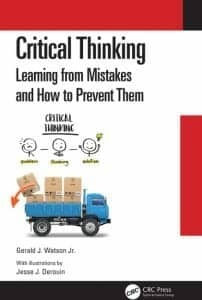 Let me suggest Critical Thinking: Learning from Mistakes and How to Prevent Them by Gerald J. Watson and Jesse J. Derouin.
Let me suggest Critical Thinking: Learning from Mistakes and How to Prevent Them by Gerald J. Watson and Jesse J. Derouin.
This book exposes the many poor thinking habits we have. Here are just a few the book covers and then repairs:
Being in a hurryMissing a deadlineFaulty cost analysesFailing to ask for helpI’ve personally found this book helpful, especially when dealing with customers and personal coaching clients. It’s great to be able to ascertain what errors people are making and help guide them to more logical conclusions.
Anyone can do this for themselves too. Read this book.
Thirteen: Know Your ScienceThe lack of scientific literacy in society is a huge problem.
That’s why I recommend Science, Pseudo-science, Non-sense, and Critical Thinking: Why the Differences Matter.
In this book by Marianna Barr and Gershon Ben-Shakhar, you get detailed chapters that use critical thinking to debunk:
Cold readingAstrologyGraphologyMysticismAnother thing that makes this critical thinking book unique is that it includes:
Correspondence with HoudiniGood movie and literature examplesExcellent lists of books to follow-up on with for further information about each pseudoscientific topicI also like how the book discusses the reasons why people need to believe – or at least think they do.
Fourteen: An Ancient Critical Thinking Book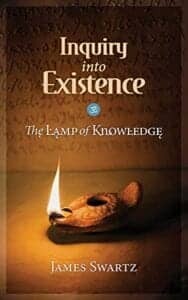 Of all the schools of philosophy, I personally find Advaita Vedanta the most interesting.
Of all the schools of philosophy, I personally find Advaita Vedanta the most interesting.
Basically, this term translates to a statement like: “the culmination of the Vedas is ‘not two’”.
In other words, the philosophy works to demonstrate a “oneness” in human consciousness.
One of the most interesting books uses critical thinking to demonstrate this principle. It is called Panchadasi.
My favorite commentary on this text, which includes a translation, is Inquiry Into Existence, by James Swartz.
This philosophy will probably stretch your mind.
The trick is not to mistake its conclusions for solipsism, which is arguably nonsense. It’s really just a way of thinking through the situation we all find ourselves in as the bearers of consciousness.
Crafting A Library Of Critical Thinking BooksI hope you enjoyed checking out this list of books on critical thinking. Please let me know which ones you check out and how you helpful you found them.
There are many more out there, and keep in mind that you can find texts that will help you improve many types of thinking.
The important thing is to have a library that you continually build and read thoroughly.
And to get it all in, I recommend that you check out how to read faster next.
Need help with remembering what you read from these books? Check out my free memory improvement course:
May 11, 2022
How to Learn New Skills Quickly (And Keep Them Forever)
 If you want to learn new skills, the process doesn’t have to be difficult.
If you want to learn new skills, the process doesn’t have to be difficult.
What might challenge you, however, is first learning the most effective process for rapidly acquiring expertise.
Then you have all the gurus telling you what to do and how to do it based on their journeys.
Sure, sometimes you can follow their tips.
But let’s get one huge problem out of the way from the get go:
You should not try to reproduce anyone else’s journey.
To really learn new skills, you ultimately have to enter the territory so that your mind can map it.
And no amount of “tips” will prepare you better than your own experience as you map your way through the jungle of what you currently do not know.
With that in mind, on this page, I’ll be covering what I’ve learned about how to develop skills over my years of learning.
Why should you take me seriously – apart from the fact that I just gave you the most powerful advice upfront?
I have:
Written multiple bestselling booksAccomplished goals in multiple languagesDelivered a TEDx Talk with over 2 million viewsBuilt the world’s leading memory improvement websiteCompleted a PhD, two MAs and multiple certificatesToured as a musician in multiple bands… and much, much moreDespite all those experiences, I’ll be the first to tell you that I still have a lot to learn. And that’s the next best tip I can give you upfront:
Keep humble. It helps you learn faster no matter how good you get.
So are you ready for the best nitty-gritty learning tactics I know?
Let’s get started.
How to Learn and Master New Skills QuicklyThe first thing I would point out is that technically there’s no such thing as a “new skill.”
Now, this might be getting a bit philosophical, but I think the point is important.
Just because it’s “new to you,” doesn’t make it new. In fact, it wouldn’t even be called a “skill” if someone else hadn’t learned it first.
That’s why this first tip is so important.
One: Get Clarity On How The Skill Is DefinedOften, the people who have mastered skills completely define them very differently than those who want to learn it.
For example, if you read a book by Bruce Lee, you’re not going to get a lot of technical verbiage about the physics of movement. You will get something more akin to philosophy, which is very important.
Plus, you have a lot of publishing companies out there who hire people to write books about skills they don’t actually possess.

So rather than look at just how the mass media or publishers define the skill, make sure you also go to the source.
Two: Seek Experiences Wherever PossibleAs part of going to the source, try to find ways to learn the skills through experience.
This doesn’t mean not reading books or taking video courses. You definitely want to do that, and make sure you read in a way that makes the information memorable.
I’m talking about supplementing the skill you want to learn with:
WorkshopsSeminarsApprenticeshipsField tripsLong term coachingWorking with a mentorEven skills that are solitary, like reading and writing, benefit from working in groups. You can take breaks and talk with others, rapidly accelerating how you learn.
Three: Remove Limiting BeliefsA lot of people think they have a particular learning style.
Whereas you might respond better to different kinds of visualization related to reading, there’s no reason to believe that anything holds you back.
As Tesia Marshik has shown in her research, learning outcomes don’t budge at all when educational material is presented in ways that cater to different learning styles. Check out her TEDx Talk for a quick overview of her work in this area.
Four: Make Your Own MetaphorOne of the reasons people blame “learning styles” for their failure to master skills is having a low-self image.

Fortunately, it’s fun and easy to use positive visualization to correct this issue.
You can also craft a personal metaphor. As Nir Eyal has shown in his research, many addicts have recovered thoroughly and completely after adopting a new persona.
The science behind this strategy is solid, but it’s also not new. Many philosophers, ranging from Plato to Nietzsche and beyond have suggested this strategy.
In my own case, I have often adopted personal metaphors like:
My memory flourishes like a gardenI am a Discipline EngineMy life is floating along with calm and enjoyable cruising altitudePractice creating and using your own metaphors and I’m confident you’ll find yourself learning new skills much faster.
Five: Embrace MistakesFear of failure spreads like a disease.
It’s a particularly savage blight on the learning community because few things can be learned without making mistakes.
Many times when I want to learn a new skill, I know in advance that I’ll be making tons of mistakes.
When you accept and embrace this fact, you’ll enjoy more fulfilling success.
The trick is to employ the next step.
Six: Journal and AnalyzeI always counsel my students in the Magnetic Memory Method Masterclass to use a Memory Journal.
https://www.youtube.com/watch?v=BracG...
It’s an essential tool because it helps you keep track of your progress.
And when failure happens – as it inevitably will – keeping a journal helps you reflect on the exact nature of what went wrong.
Without analysis, it’s difficult to make corrections.
It also makes deliberate practice nearly impossible.
Seven: Break Things DownIt’s important to eat the elephant one bite at a time.
I’m not necessarily talking about microlearning, but rather seeing the component parts and seeing how they can be divided into small components.
For example, when I learned the very difficult skill of writing books, I didn’t just dive into 100,000 word tomes.
I started with small articles.
Even to this day, I write books one chapter at a time. And these are written one page at a time.
Likewise, when learning to market my books, I didn’t try to advertise on dozens of platforms all at once. I picked just one, learned its ropes and grew from there.
If you struggle with breaking things down, this is where adopting a personal metaphor can help. You can say, for example, “I am a master at breaking skills down.”
Eight: Balance the Challenge-Frustration CurveLargely due to fear of failure, many people avoid challenges.

The problem is, if you don’t take on challenges, you cannot grow.
On the opposite end of the spectrum, many people rush into things so quickly that they wind up frustrated. That leads them to give up prematurely.
With this in mind, the best thing to do is balance what I think of as the Challenge-Frustration Curve.
There’s no chart or diagram that will show you how to do this. You simply have to maintain an awareness that you cannot grow without taking on challenges. And if things get too tough, you need to explore ways to reduce the frustration that will inevitably occur when you’re not skilled enough to continue – yet.
Nine: Avoid Unanswerable QuestionsHow long does it take to learn a new skill?
Well, let me ask you this:
If you really want the skill, does it really matter how long it takes?
Personally, I focus on acquiring new skills that I want to enjoy maintaining for life. I don’t want my mind cluttered with worrying about when I’ll finally master a skill.
Instead, I want to enjoy each and every step of the way.
In other words, mastery is ongoing practice. And the best way to pick up new skills is to act as if you will be learning them forever. This is another kind of mental metaphor that helps keep your focus where it belongs.
Ten: Take Breaks StrategicallyDid you know that there’s a highly scientific way to take breaks?
It’s called interleaving. You literally focus on learning one skill for 15-20 minutes, then switch to something else.

The best part about it is that you can pick up multiple skills at the same time while accelerating your progress.
My fellow memory expert Dave Farrow has talked about how it helped him learn robotics quickly.
I find interleaving especially useful when reading, especially dense and technical books about philosophy.
Eleven: Be a CompletionistIn the Magnetic Memory Method Masterclass, I pass on a few notes my best students have urged me to show new students.
To take one example, from Adolfo Artigas you get the stern warning not to skip around the program or “cherrypick.”
I find this important in every course I take myself.
And the only reason I can see why more and more people are missing out on crucial details is that digital amnesia is ruining their ability to focus for more than a few moments at a time.
The reason completing books and programs from beginning to end is so important has to do with your brain chemistry is that thorough learning requires tonic dopamine. In other words, you need a stable level of the brain chemical across time.
But when you flip between screens and tabs on your computer, you’re blasting yourself with phasic dopamine. It ruins your attention span.
Now, there are ways to skim and scan through books that doesn’t wreck your focus, but they’re not a replacement for being a completionist most of the time.

Many people are too proud to get a coach or mentor.
That’s a shame because often times, personal guidance is the only thing that will help them move forward.
I’ve had many coaches and mentors and the only downside is that you sometimes have to experiment with a couple of them until you find a fit.
But that’s the same thing with trying on shoes, so it shouldn’t be a dealbreaker.
If you’re journaling as I suggested above, you should be able to find the right fit for you a lot sooner.
And when you’re practicing the mental metaphor technique I shared with you today, you’ll soon be able to add your mentor’s style to your mind.
You can literally save yourself a coaching hour by asking yourself, “What would my coach tell me to do about learning this skill?”
Learning New Skills Could Not Be EasierNow that you’re equipped with some of my best tips, I hope you agree that learning any new skill is a lot easier than it seems.
The trick is to adapt a policy of complete and “radical” honesty.
Don’t let yourself or anyone else pull the wool over your eyes. There’s nothing to be gained from self-deception.
And one of the best skills of all to learn involves amping up your memory. That way, you won’t forget the tips you learned today.
If you’re interested, grab my FREE Memory Improvement Kit:
In it, you’ll learn to use a Memory Palace. This is a skill that gives you a mental toolbox for storing lessons like the ones you learned today.
And if you have any questions, just pop them in the comments.
So what do you say?
Are you ready to get out there and learn something new?
May 4, 2022
Visual Memory: What It Is & How to Improve It
 Some people say that visual memory boils down to recalling what things look like.
Some people say that visual memory boils down to recalling what things look like.
That’s part of the picture, sure.
But if you really want to understand visual memory thoroughly, you need to dig deeper.
And that’s exactly what we’re going to get into on this page.
Visual memory ranges from the concrete to the incredibly abstract. It is essential for navigating the world and you can improve it.
So if you’re ready to “see” what visual recall is really all about, let’s get started.
What Is Visual Memory?Visual memory is not merely the ability to recall what you see. This kind of “visual recall” may include:
ObjectsWordsPeopleActivities and eventsMental images that appear in your imaginationDreamsHow do you use it? To take just a few examples, a healthy visual memory helps you:
Remember where you put your keys and other things you want to stop losingSpellingIncidents that you describe after the factCopying notes from textbooks and screensThus, visual memory is technically any kind of memory formed by information that enters your mind through a visual system.
This foundational principle is where things get really interesting. For example, there are types of synesthesia where some individuals might experience sounds in highly visual ways.
And if you think about it, most of our experience in watching a movie is built not from what we see. The brain builds 70% of the experience (or more) from what we hear.
[image error]We often think of movies as a visual medium, but studies have shown that our brains build pictures largely from what we hear.
With that in mind, Steven J. Luck and Andrew Hollingworth define this term in their book Visual Memory like this:
“The memory must retain properties of the original perceptual states generated when the memory was encoded.”
This definition of visual memorization means that you could feel something but if your brain translates it into a visual concept at any time, it will count as a visual memory.
Let me give you an example:
In choreography, many people close their eyes to help them remember moves. Later, they will picture themselves or others going through these movements. There are granular details they can visually focus on in their imagination without ever having “seen” them.
As Susanna Siegel points out in The Contents of Visual Experience, there are a number of ways information (content) enters our minds:
We have beliefs about what we see before it is seen (which can cause us to mistake what we’re seeing)What we see guides our physical actions in concrete ways (like when you open your hand to a particular size to accommodate a door handle)We introspect about what something might look like (as in the choreography example above)You also have to think about situations where the autonomic nervous system’s sympathetic branch has been stimulated – such as when your pupils dilate. Optical illusions often draw upon these automatic responses to trick our minds.
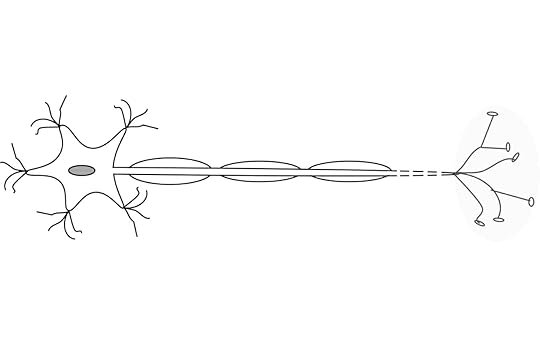
Some of these points might seem abstract, but everything comes down to one word: context. Keep context in mind when defining visual memory and you will enjoy greater accuracy when describing it.
How Does Visual Memory Work?As we’ve just discovered, the context matters.
For example, if we’re talking about memorizing the content of scenes or events, we need to take how our eyes move into account.
As John Henderson demonstrates, eye movements are very important to understanding how we remember various scenes and events. These directly impact on how the brain makes a “composite” mental image of what we’ve experienced.
This means that visual memory is not really experienced or built. It is composed after the fact in collaboration with our working memory.
If we’re talking about short term memory as it relates to visual and spatial memory concerns (visuo-spatial), Mitchell R. Riley and Christos Constantinidis urge us to look at neurons in the prefrontal cortex. They conclude that focused attention is the main role the brain performs before visual memories can form.

According to Greg D. Reynolds and Alexandra C. Romano, the real place to get an understanding of visual memory is to look at early development. In an article called “The Development of Attention Systems and Working Memory in Infancy,” they show that eye fixation is involuntary.
This means that something in our brains drives us to look at things and fix on them until our “posterior orienting system” develops voluntary abilities. In other words, our visual memory trains us to “remember” how to control our eyes by controlling them for us!
How is visual memory tested?
Typically, you’ll see scientists using the Arthur Benton Visual Retention Test.
But here’s an important learning tip:
If you’re looking for visual memory examples, it’s useful to look at each stage of life, rather than a blanket approach. How visual memory works when you’re an infant is very different from when you’re age one or ninety one.
How to Improve Visual Memory: 13 Visual Memory Exercises and ActivitiesNow we come to the question of improving visual memory.
Yes, you can.
Keep context in mind as you go through these twelve approaches, however. Your exact definition of visual memory in a specific context matters if you want to reach your goal.
https://www.youtube.com/watch?v=Ht7Kj...
Exercise One: Describe Objects Without Using Certain WordsCan you tell me what color an orange is without using the word “orange”?
This is an incredible visual memory exercise and perhaps the most challenging.
For more challenges, try to describe these objects without referring to them by name:
TruckMapPencilElfExercise Two: Use Number RhymesHave you ever heard of this memory technique for memorizing lists?
If you had to memorize the word orange as the first listed word, you could associate it with a gun.
That’s because one rhymes with “gun.” You would imagine the gun shooting the orange and the resultant explosion.
If you had to memorize “map” as the second word, you could have it rolled up and inserted into a shoe. Shoe is the image for two because the two words rhyme.

Come up with your rhymes or learn this pegword method and then memorize ten items in order by causing your rhymed words to interact with the list.
Exercise Three: Visualize Acronyms In SpaceYou know what “FBI” stands for, right?
But have you ever tried visualizing the letters floating over your head?
Here’s a robust list of acronyms to work with, along with a few more related visualization exercises.
Exercise Four: Recall An Entire DayWhen you’re lying in bed tonight, try to recall as much as you can of the day. Make sure you see what’s happening from the minute you wake up and sustain continuous recall as long as you can.
If you have aphantasia and can’t see images in your mind, focus on other representations. You can also try my hyperphantasia guided meditation.
Exercise Five: Recall Your DreamsKeeping a dream journal is a powerful way to exercise your visual memory.
For many years now, I’ve hardly skipped a morning without remembering my dreams. You can learn more about how to remember dreams if you’d like an established procedure to follow.
Exercise Six: Visual Meditation[image error]
There are many ways to meditate. Many will improve your visual memory in a general way.
But did you know there are 9 powerful visual meditation exercises you can complete? Try them all!
The trick with visual meditation is to pick interesting and engaging material to work with.
And you can increase the challenge over time.
For example, start with a simple candle flame. Bring an imaginary flame to mind and animate it.
Then meditate while thinking about a memorized poem or song lyrics. Try to see the lyrics coming out with correct spelling as your favorite singer performs the song.
Can you tell just how much more challenging this second exercise will be? It’s this additional level of challenge that makes it so powerful for your growth.
Exercise Seven: Scan PicturesGet out a magazine and look for the main details on your first pass. Name them out loud.
Then, take a second pass. Look for things that you missed the first time around, including shadows.
Consider visual aspects like the height and width of objects. Also mentally measure the distances between things in the image.
Finally, try to figure out the vanishing point and the negative space. These are skills that artists develop, and they are good for your visual memory. It also counts as a powerful cognitive activity that is especially good for adults.
Exercise Eight: Verbalize PicturesA simple way to improve your visual memory is to talk about what you see when looking at art.
Take this medieval art, for example:

It’s challenging to describe, isn’t it?
That’s why giving it a go will help your visual memory grow.
As you describe what you see, work in different directions. For example, you can start with the birds at the top and work your way down.
Then, on your second pass, you can start with the man on the left and move to the right (or vice versa).
As you proceed, monitor yourself. Try to make sure that you’re using unique words as much as possible.
Instead of always saying “man,” add some variety with words like “monk,” “penitent,” etc.
Exercise Nine: Draw A Story From A BookStephen King says in On Writing that readers rarely imagine characters as he visually describes them. That’s why there aren’t a lot of details about clothing and the like.
One excellent way to exercise a number of visual memory aspects is to draw what you imagine with your own hands.
If you struggle to visualize characters at all, you can start with ones that you have seen. For example, here’s a drawing of Bender from Futurama I did to create a mnemonic device for myself.

You don’t have to be an artist to benefit from the visual memory exercise of drawing characters you know from books, movies or TV programs.
Exercise Ten: Draw A Story From Your LifeWe all have many interesting experiences.
But few of us take time to visualize them in a meaningful way.
One theme I’ve noticed in my life is the ongoing lack of a stable, permanent home.
When I completed this visual memory exercise, I expressed the pain by using fire.
Then, I colored a stylized letter “I” in a cooling color. Finally, I added an acronym-poem to help feel okay about this lack of stability in my life.
[image error]
Of all the visual memory strategies I know, this has been the most rewarding. It also plugs deeply into sensory memory and gives it a good exercise.
If you like this kind of activity, also consider giving mind mapping a try.
Exercise Eleven: Teach SomethingThis approach can take a bit of patience, but it works for a clear and obvious reason.
When you teach someone else a skill, you access at least two parts of your visual mind:
Your mental image of how you do itA new mental image of how the learner sees an alien taskAs a bonus variation, try to remember learning to tie your own shoes. You might have a memory of someone explaining it to you as well.
Moving between first and third person points of view on a teaching and learning experience is a great way to stretch your visual skills.
Exercise Twelve: Study Resemblances And PatternsDo owners really look like their pets?

I don’t know, but the more interesting point is to work out why your brain thinks so.
Study the picture above. Can you spot the exact characteristics that make you think that there’s a relationship between these two?
Write out your answer to verbalize what you’re seeing. Feel free to get your hand out and trace certain features, or even draw them out.
You’ll learn a lot in the process.
Exercise Thirteen: Use A Memory PalaceOne of the most effective visual memory exercises involves the Memory Palace technique.
It’s a fun way to take locations you see with your own eyes everyday and turn them into a tool that helps you remember things better.
To get started, you’ll want to draw your first Memory Palace and then select a few things you want to remember – like words from a language you’ve always wanted to learn.
Then, you mentally navigate your way through the rooms you’ve selected, literally using your mind’s eye to help you “see” a journey.
I can’t think of a better workout for the visual aspects of your memory than this ancient technique. To learn more about how it can help you exercise your brain and help you remember anything, enrol here:
Short Term Visual Memory Vs. Holistic HyperphantasiaOver the years, thousands of people have told me that they want to improve their short term memory.
Although that’s fine, really what we all need to be focused on is holistic memory improvement that includes visual improvements.
For that, you might benefit from developing hyperphantasia (the opposite of aphantasia). Here’s a guided meditation for that:
https://www.youtube.com/watch?v=uAz3_...
By extending your practice into the multi sensory aspects of your brain, you’ve got a much better chance of eliminating any visual memory deficits currently holding you back.
And now you have a ton of exercises you can run through to experience rapid improvement.
So what do you say?
Which exercise are you going to add to your memory workout first?
April 27, 2022
What Is Intrapersonal Intelligence? (And How to Improve Yours)
 Intrapersonal intelligence is one of the most powerful psychological assets you can develop.
Intrapersonal intelligence is one of the most powerful psychological assets you can develop.
Why?
Because it’s the key to studying independently.
This is because intrapersonal intelligence allows you to imagine what other people think and the thought processes they use to accomplish their goals.
In other words, if you want to succeed like Einstein, you need to be able to create a mental image like he did.
Fortunately, this is easier to do than most people think.
And as you’ll discover, intrapersonal intelligence can not only be developed readily by anyone.
It is the key to improving how you learn a wide variety of topics, from math to languages, philosophy to acquiring new skills.
Ready to improve this aspect of your intelligence?
Let’s dive in!
“Intrapersonal” literally means within a person. It is a form of insight typically arrived at through reflective thinking.
Another way of thinking about it involves realizing that you are not one fixed personality. Rather, your personality is built from multiple parts.
Sometimes these parts compete with one another. For example, research has shown that young people choosing vocations might not yet have enough insight about the different parts of their personalities to make solid career decisions.
Yet, when these students are given insight into the theory of multiple intelligences, they feel less confused and more confident in the choices they make, even at a younger age.
As another study puts it:
“Intrapersonal intelligence is the ability to understand oneself and act on that understanding which includes awareness of moods, intentions, motivations, temperaments, desires, self-discipline and self-respecting abilities.”
In other words, it’s not just about understanding the different parts of your psychological experience. It’s about using that insight to act in particular ways to produce positive outcomes.
Origins and ResearchMuch of the research into intrapersonal intelligence stems from Howard Gardner’s theory of multiple intelligences.
Although many people have criticized Gardner’s approach, it has led to many positive changes to education. In particular, many teachers now know how to help young people cultivate metacognitive thinking skills.

Helping students improve their intrapersonal intelligence has even been shown to improve math scores. They experience better outcomes because of their increased analytical thinking abilities as such.
Similar research has shown improvements in other skills, such as artistic ability and the medical sciences. Indeed, as we learned from Dr. David Reser on the Magnetic Memory Method Podcast, medical students who learned memory techniques as a group by tapping into aspects of their personalities that often go unexercised.
Intrapersonal Intelligence ExamplesTo sum up, intrapersonal involves finding the different aspects of your personality and then utilizing them as resources.
Many incredible example are available, so let’s get started with some of the most impactful.
One: Image StreamingEinstein wasn’t just smart. He was imaginative.
And he took every opportunity to visualize the problems in physics he was trying to solve.
One technique he used was image streaming.
Not only does the technique (as I teach it), walk you through multiple aspects of your personality. It helps you experience the fullest range of sensory visualization modalities. Once you start experiencing these different resources within yourself, you’ll be able to take action on them.
Not only that, but if you’ve ever worried that your intelligence is fixed, image streaming helps prove that it isn’t.
Two: MastermindingAlthough it would be a stretch to call Napoleon Hill scientific, many accomplished people have used a technique he called “masterminding” in his book, Think and Grow Rich.
In brief, you call up people you’ve read about (like Einstein) and ask them to help you solve various problems.

It sounds ridiculous on its face. But in a letter to Lucy Donnelly, the highly influential philosopher Bertrand Russell wrote:
“And another thing I greatly value is the kind of communion with past and future discoverers. I often have imaginary conversations with Leibniz, in which I tell him how fruitful his ideas have proved, and how much more beautiful the result is than he could have foreseen; and in moments of self-confidence, I imagine students hereafter having similar thoughts about me. There is a ‘communion of philosophers’…”
I often hold conversations with philosophers myself and it is a tremendous tool for solving problems.
Rest assured, I have no belief that I’m actually talking to my favorite philosophers. But provided I know their writing well, it’s a perfectly reasonable way of accessing my intrapersonal intelligence and taking action on what comes out. It’s also another reason why philosophy is so important.
Three: Battling Monkey MindMany people struggle with thoughts gone wild.
But recent psychological therapies like Internal Family Systems therapy have been helping people tap into their intrapersonal intelligence to deal with psychological problems. In No Bad Parts, Dr. Richard Schwartz helps people identify and tap into their many “sub-minds.”
This approach has even shown positive outcomes for certain kinds of chronic pain.
Likewise, I have worked with a metacognitive and memory-based meditation technique that helps you experience the multiple parts of the mind.
As I shared in my TEDx Talk, this approach works by using questions that help you identify the different parts of your mind and then neutralize them.
Four: Bringing Science to Your IntuitionsHas anyone ever told you to “follow your gut”? So you did, and yet you still wound up failing badly?
Chip and Dan Heath explain why our intuitions often fail in their book Decisive.
It’s not that you shouldn’t rely on your intuitions forevermore, but rather, they should be tested. They suggest using their W.R.A.P. technique, which essentially draws upon different aspects of your personality:
Widen your options (patience and due diligence)Reality test (analytical thinking)Attain distance (giving yourself space for reflection)Prepare to fail (maturity and discernment)They also recommend talking with experts as much as possible, something that builds your own inner expertise as you learn new skills.
Another tool you can use is taught in The Wise Advocate. One of my favorite exercises from the book has you asking yourself if you feel limited or expansive when faced with a decision.
By consulting those feelings within yourself, you’ll be sure to make better decisions because you’re using structure to test them. That’s not only what scientific living is all about. It’s also a reliable way to improve your IQ.
Five: Mental StrengthOften called “resilience,” this intrapersonal strategy involves finding inner resources to help you overcome obstacles.

But at an even higher level, you want to set the stage so that you don’t have to call upon resilience in the first place.
To help yourself with that, give my mental strength exercises a try.
6 Intrapersonal Intelligence Activities That Can Increase Your SkillsNow that we’ve seen some examples of how intrapersonal intelligence plays out, let’s dive into some activities.
Please don’t feel that you have to try them all. Pick the ones that make most sense to you.
Journal About Your “Selves”Using a journal is an excellent means of self-expression. But we often lock it into the myth of our identity as some kind of unified whole.
For the purpose of this exercise, explore different aspects of your many selves.
To give you a personal example, I’m responsible for a ton of different activities related to the Magnetic Memory Method Masterclass.
As a strategy for maximizing my time as a solopreneur, I keep multiple journals. One is for my “Inner CEO.” Others are for my content creator, my marketer and my researcher.
By journaling for each of these aspects of my personality, I’m able to nurture them all and keep this project growing without burning out.
Use Memory-Based MeditationThere are many kinds of meditation. For example, here’s a number of concentration meditation techniques to explore.
But by memory-based meditation, I mean more specifically learning and reciting specific material from memory.
The material I have found most successful comes from the work of Gary Weber in books like Happiness Beyond Thought and Evolving Beyond Thought.
I’ve summarized the material and teach you how to memorize it in a book called The Victorious Mind.

Once while being interviewed, I told the host that my hardest lesson in life has been remembering that other people do not think the same way I do.
As soon as I heard myself say it, I realized that I needed to read more biographies and autobiographies. I was literally starved for perspective!
So what’s the trick?
Compare and contrast your way of thinking with the thought processes of the people you’re reading – as many other people as possible. And pay extra-special attention to their problem-solving models.
Practice Taking Action On DiscoveriesAs you now know, the definition of intrapersonal intelligence is not just insight about your inner workings. It’s about taking action on those insights.
How?
Try this simple exercise:
When you observe an aspect of your personality, create a vision statement around it.
If you follow the specific guidelines I give for crafting such a statement, you’ll thoroughly vet the actions you want to take. They’ll be focused towards positive outcomes that will reveal even more about your many inner resources.
Write FictionEven if you have no plans to storm the world with bestselling novels, taking some time to write simple stories will help you explore different aspects of your own personality.

When you make up characters or base them on people you know, you’ll be exercising that inner reflection so central to this psychological skill.
Plus, because writing is action, you’ll have the full definition covered as you flex your imagination and take action by writing.
Learn a LanguageWithout a doubt, language learning is about talking with others.
But it creates great internal exercise as you explore different aspects of language as it flows through your mind.
It also gives you the opportunity to use a Memory Palace. This learning strategy involves using multiple people and locations in combination to help you absorb vocabulary and phrases faster.
As you do, you’ll utilize and improve multiple levels of your personality.
Improve Your Intrapersonal IntelligenceAs you can tell, all it really takes to boost this aspect of your life is a bit of self-reflection and consistent action.
You now have a bunch of activities to explore and scientific studies to read.
And if you’d like the ultimate learning experience that will help you remember everything you encountered today, consider signing up for my FREE Memory Improvement Kit:
It comes with four videos and a number of worksheets you can fill out as you improve your memory.
The more you explore your memory, the more you’ll exercise your intrapersonal intelligence.
After all, what are we other than the quality of our memory abilities? And where else is our intelligence stored?
So what do you say?
Are you feeling equipped with knowledge about intrapersonal intelligence and how to improve it?
Just shout out if you have any thoughts or questions. I appreciate you visiting the site today and hope to hear about your experiences with this form of personal development soon!
April 20, 2022
How to Remember a Story Using a Memory Palace
 If you want to remember a story, the process is actually pretty simple.
If you want to remember a story, the process is actually pretty simple.
You can be as detailed as you like, or just recite the general gist of a tale.
And by the end of this lesson, you’ll be able to entertain people at parties or include stories in your speeches and presentations.
Or maybe you want to better convince your friends to read stories and watch the movies you love. That will be much easier for you to do as well.
If you want to become a better writer, nothing will help you more than knowing stories inside and out.
Even better than that, on this page, I’m also going to show you how to memorize the ins-and-outs of plot.
Who am I to teach you about remembering stories?
Well, in addition to having told a story at a TEDx event that now has nearly 2.5 million views, I spent nearly a decade as a Film Studies professor.
I also spent a few years working as a story consultant on movies that actually got made. And I’ve written two well-received books about screenwriting.
Indeed, I got my story consulting gigs partly because of the books I’ve written on screenwriting. I even have a writing credit on my IMDB profile.

Anthony Metivier on the set of Bailout with Eddie Furlong, Dominic Purcell and Uwe Boll
Although I certainly don’t know everything under the sun, I’ve proven that I can write and help craft successful stories. I’ve memorized detailed stories and delivered them before the masses.
And if you’re ready to remember any story, I’m confident my tips will help you out
So let’s get started!
What is a Story Anyway?One of the most interesting aspects involved in memorizing stories, is that you soon discover every narrative is composed of many different kinds of information.
Just about every story will involve:
Names, places, locationsDescriptionsSpecial terms (sometimes foreign vocabulary)Quotes and epigraphsActionsDialogueNumbersThemesPlotCharacterizationDetails about the author, publishing history, audience receptionThe more you divide these types of information in your mind, the more you’ll be able to approach the story as a whole with dexterity.
With these different types of story information in mind, let’s look at the process step-by-step.
How to Remember A Story in 7 Easy StepsAs you go through these steps, keep in mind that you don’t have to master each and every one the first time you commit a story to memory.
The more you allow yourself to grow with the story memorizing process, the more success you’ll have.

That said, it’s important to focus on these fundamentals. We don’t want to put the cart ahead of the horse and wind up frustrated. That’s why I’ve done my best to arrange the steps in order of priority, keeping beginners with no prior experience with remembering stories in mind.
Step One: Decide on the Exact GoalBefore you start committing any of the story to memory, think about your exact goal.
Are you:
Delivering the story as part of a memorized speech?Committing scripture to memory?Memorizing stories to prepare for any type of exam?Required to recite the story verbatim?Or are you allowed to work from bullet points?I ask these questions because when I gave my TEDx Talk, I memorized the entire story word for word.
https://www.youtube.com/watch?v=kvtYj...
But when I was a film professor and summarized stories as part of my lectures, I usually memorized just the bullet point version of those stories. Because I know all of the plot points by memory, I often didn’t even need to do that. (We’ll talk more about the plot points method in a moment.)
When I memorize scripture, I sometimes include the verse number, which involves knowing a technique called the Major System or 00-99 PAO.
Step Two: Get Familiar with the StoryThis probably goes without saying, but you’ll want to read the story in its entirety first, or watch the movie in full.
And I would suggest you go a few steps further.
In addition to going through the material thoroughly, read about the story.
One thing I used to do as a Film Studies professor was to read the screenplay before watching a movie. Then I’d watch the movie and read as many reviews and critical interpretations as I could find. If I had time, I’d watch the movie at least one more time before writing my lecture.
In the case of short stories or novels, there is no screenplay. However, you can follow-up by reading articles, interviews with the author and reviews on bookseller pages and book reviews.
All of these efforts will help build a larger web of associations in your mind that make the actual memorization a lot easier. It also makes everything a lot more fun because you’re making yourself an expert about the story itself.
Do this enough times, and you’ll come to think about the place of the stories you remember in the context of history, philosophy and the culture at large, all of which is very rewarding.
Step Three: Create a Primary and Secondary Memory PalaceWhen you really want to know a story well, I suggest you have at least two Memory Palaces instead of just one.
What’s a Memory Palace?
It’s a simple mnemonic device that allows you to create mental versions of locations. Typically, you would base them on homes, offices, schools and any location you’re familiar with and can easily organize into a simple journey.
Why two Memory Palaces?
I’ve found it very helpful to have all the names of the characters and location names in one Memory Palace, and the major plot points in another.
This approach is useful even if you’re memorizing the story verbatim. It helps you get some of the harder elements out of the way first. And knowing character names also serves as a kind of time signature. It’s easier to remember parts of the plot because you’ll remember the names of the characters and place names with knowledge of the order in which they come up.
If you like, you can extract the character names while you’re reading by using the technique I teach in how to memorize a textbook.
Step Four: Memorize Word for WordTo memorize verbatim is a simple affair.
You just need to create associative images for the words and lay those associations out along your Memory Palace journey.
Now, if you’re new to the practice, you might need more images than a more experienced memorizer. For example, there are tons of operator words, like “to,” “it,” “he,” etc.
For these words, it’s no more or less difficult to come up with images than it is for more complex words. Basically, everything comes down to your level of skill with the techniques and completing the exercises in the Magnetic Memory Method Masterclass.
Often, you can get away without having an image for such words. When I memorized the story I told in my TEDx Talk, I managed to relate it word-for-word by just encoding the keywords. Because I know English, most of the smaller words fell logically into place. And if they were slightly different here and there, it did not change the theme or message of the story I told.
The final part of this step is to segment the memorization. Rather than expect to memorize the entire thing in one go, break it down. I like to memorize for 5-10 minutes, then take a break.
This might seem slow to you, but in the end, it’s actually faster. You’ll make fewer encoding errors and spend a lot more time with your full mental powers charged. If you plow on while drained, you’ll wind up spending too much time correcting issues that didn’t need to be there in the first place.
Step Five: Robust RehearsalOnce you have any amount of material memorized, it’s important to start reviewing it.
For this, I use a process called Recall Rehearsal. It taps into the memory science of active recall.
To make the process as effective and efficient as possible, I follow these steps:
Find a quiet place where I won’t be disturbedHave pen and paper readyWrite out the memorized narrative material in forward orderCheck the accuracyUse the memory techniques to correct any unacceptable errorsBut when I really want to present at my best and feel “bulletproof” on the stage, I go further.
I write out the speech in reverse order and out of order.
For example, the odd numbered sentences are typically on the odd-numbered stations in the Memory Palace I use. That means I can write the entire speech forwards with only the odd numbered sentences forward.
Then I write the even numbered sentences on the second pass, but this time in reverse order.
Why do this?
The answer is simple: It gives each sentence extra doses of primacy effect and recency effect.
Not everyone has to go to this extent. But I always do it when I want to speed up the memorization process and feel extra-familiar with each and every word I’m delivering on the stage.
Step Six: Practice Your DeliveryAlthough writing out the story from memory is a form of practice, it’s important to practice verbally delivering your story as often as you can.
Thomas Kraft suggested that I walk while reciting the talk. Since I could take my walks in the Memory Palace I used for my TEDx Talk, I did exactly that.
Since I walk relatively quickly, I slowed down so I could pace the talk with my progress along the Memory Palace path.
I also recorded myself delivering the talk so I could watch for opportunities to improve the delivery.
Step Seven: Memorize and Recite More StoriesMastery won’t come from memorizing just one story. You’ll want to carry on and remember many more.
It’s also advisable to remember several kinds of stories:
Short anecdotesJokesNarrative poetryParablesThe more variety you work with, the more your skills will grow.
How to Remember Plot PointsAgain, the Memory Palace will be your go-to technique for this.
I would string out the following narrative elements along a journey, perhaps using the story method.
The major plot points in most stories are:
Character is haunted by a ghost from the pastThe world is in some kind of flux or changeCharacter has a driving ambition that is in conflict with an unconscious needCharacter encounters a problem that must be solvedThere is a period of delay as the character resists the dilemma or thinks through multiple avenues of actionA crisis forces the character to take action (usually the least desirable option)Along the way to solving the problem the character either:Gathers allies that helpUndergoes a training sequenceDuring the battle, the character experiences a self-revelation that resolves the ghost and the conflict between the driving ambition and the unconscious needFollowing the problem-resolution, the world of flux resolves to a stable stateNote that not all of these plot points necessarily unfold in the same order in every story. And not every story has all of them.
But if you commit this general structure to memory, they will start leaping out at you as you read stories and watch movies.
And this knowledge of story architecture itself will help you remember stories much better.
Remembering Stories Is EasySo, what do you say?
Are you ready to commit your first story to memory?
How will you do it?
Verbatim or just based on the general plot?
I suggest you spend some part of your life mastering both. It’s tremendously rewarding.
And if you’d like more context with respect to lines of dialog, check out my article on how to memorize lines next.
April 13, 2022
Linear Thinking: What It Is and How It Can Help You
 Have you been told that you’re a linear thinker?
Have you been told that you’re a linear thinker?
You might have received it as a compliment or a criticism.
Either way, people use the term in so many different ways, it can be hard to figure out what exactly linear thinking is supposed to be.
Well, if you want to become a better thinker, you’re in the right place.
We’re about to think linearly about linear thinking together.
And we’re going to think about it in some alinear ways too.
The best part?
By the time you finish reading this page, you’ll be equipped to think in a variety of ways, in any direction you wish.
Perhaps even in an “impossible” direction that follows no line at all because it is completely free from having a point of view.
Intrigued?
Let’s get started!
What is Linear Thinking?Before defining linear thinking, let’s take a step back. Ideally in a “straight” line.
When trying to define any kind of thinking, we’re assuming that there are multiple kinds of thinking or thinking styles.
This means that we have to sort out the relationships between these thinking styles. But more importantly, we have to think about who is creating their definitions.
Linear Thinking in EntrepreneurialismResearchers Charles Vance, Kevin Groves and Herb Kindler devised the LNTSP or Linear-Nonlinear Thinking Style Profile.
Their assumption is that linear thinking is characterized by logical and analytical thinking. Nonlinear thinking, they claim, is defined by intuition, insight and creativity.
In a follow-up study, they proposed that entrepreneurs would think more linearly than actors. As a subset of this, they predicted that entrepreneurs would also think more linearly than accountants and managers.
Is it really true that thinking styles exist? And what did they find out?
The answer is complicated because entrepreneurs are often visionary in nature. They respond in off-the-wall ways to unseen market demands only they can perceive.
Creativity Can Be LinearThe notion of “creativity” when it comes to acting is also problematic.
For one thing, there are many different kinds of actors. Method actors, for example, might need to be incredibly logical in order to play the role of a certain character, but use creativity and intuition in order to create the illusion that they are such a person. In other words, actors often “reverse engineer” characters they did not create and base them on studies of people who actually exist. This approach often involves just as much mathematical precision as it does going with gut instinct. Even a highly responsive comic like Robin Williams knows the structural rules that govern how a joke works.
Thus, Vance et al’s study ends with the call for more research, noting that educational background experiences might hold the ultimate key to why some people wind up thinking in the ways that they do.
If we were to think in a “straight line” about these findings, we would want to note that these researchers are using their own definition of linear thinking. And they’re using their tool for testing their hypothesis. I’d humbly suggest that the entire study is suspect at best, a case of inventing solutions for invented problems without carefully demonstrating that thinking styles exist in the first place.
Linear Thinking In PhilosophyNow, I’m not saying that thinking styles don’t exist. But as Tesia Marshik has shown in her TEDx Talk and other research about learning styles, such notions are complicated.
When it comes to linear thinking in philosophy, Patrick Finn sees linear thinking as a negative aspect of critical thinking. In Critical Condition, he indicts “regulated systems of education” as using “a muscular, linear form of thought” to “control information and training citizens to think in a particular way.”
He sees this as a problem in politics, science and especially education. As he points out, universities are no longer related to the meaning of the word:
Universitas: the whole. The word for university came from this Latin root. To be educated at the university was to engage with the whole – the whole being, the whole body of knowledge, and the whole of society.

Although I don’t disagree with Finn’s discussion of the meaning of this word, it’s not clear to me that knowledge is a “body.” But if it is, it probably doesn’t have any straight lines, and his point is taken.
The notion of knowledge as being rounded, rather than straight, is a point made by Deleuze and Guattari in A Thousand Plateaus and other co-author works. They think of knowledge, not as a top-down structure, or a tree as Renaissance scholars like Petrus Ramus described it.
Linear Thinking As Escape or Destination?Rather, Deleuze and Guattari think of knowledge as rhizomatic, a lattice-like structure that travels in multiple directions at the same time. In another book called What is Philosophy?, they claim that “to think is always to follow the witch’s flight.”
I’m not sure, but I think they are referring to the Wicked Witch in Wizard of Oz, who sometimes chases after Dorothy in a straight line. But other times, she flees in frustration from Dorothy, as if trying to escape.
This means that thinking is not always directed at arriving somewhere. Sometimes we do it just to flee the present conditions, commonly known as escapism.
The witch also disappears in a puff of smoke after she’s killed. Perhaps Deleuze and Guattari are referring to their notion of deterritorialization as the thoughts of an individual ultimately disappear after they die.
Or they might be thinking about philosophy’s ability to neutralize unwanted thoughts, which was the subject of my TEDx Talk. In it, I discuss the highly linear use of good thoughts to remove unhealthy and unpleasant thought patterns – as if they were disappearing into a puff of smoke.
Linear Thinking And TimeFriedrich Nietzsche wrote a lot about what he called the Eternal Recurrence of the Same. He challenges us to think about how we would live today as perfectly as possible so that we could make full use of it should a “curse” cause it to repeat again and again. In other words, he’s anticipating the movie Groundhog Day by over 100 years.
But his concept is a bit more complex than that. As Heidegger explores this idea in his second commentary on Nietzsche, Heidegger suggests that all of the past appears in the present.
In other words, all thinking is both linear and alinear. If time is traveling in a straight line, then all thought unfolds as having a beginning, middle and end. Yet, if the entirety of the past is contained in each present moment, then any thought you have in the present moment has perhaps transcended any and all notions of the straight line as we understand it.
Linear Thinking In ArtArt is either representative or abstract. Representative art is often called pictorial, but art that seeks to explore the representation of representation itself is often called an example of linear thinking.
That said, M. C. Escher often used linear thinking in pictorial ways. He frequently drew upon the impossible cube as a reference in many of the rooms he created featuring people navigating impossible staircases, or waterfalls that fed themselves after flowing upwards.
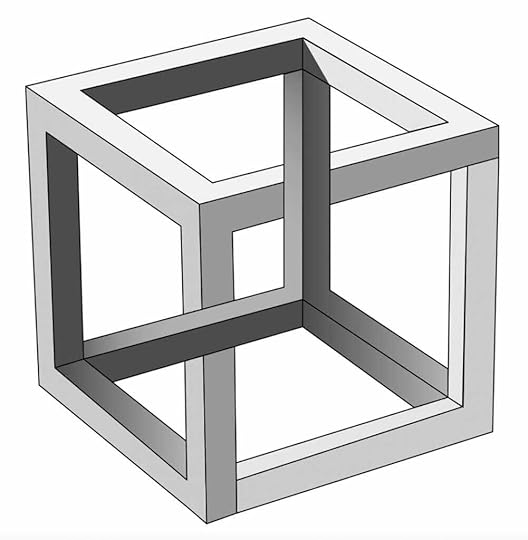
Many movies start at the beginning and conclude at the end. Or at least, movies typically start when a character encounters a problem they need to solve and then end when the solution is found.
But not all movies work this way. There’s a great western called The Searchers. Like a Greek tragedy, it begins in medias res, or in the middle of things. A lot of subtle clues in the dialog and how the character Ethan dresses fill you in on what his past was like. You need to think in a nonlinear way to properly understand the complexity of his motivations.
David Lynch makes movies that mess with time in very intense ways. Both Lost Highway and Mulholland Drive employ a fugue narrative, or what is sometimes called a Möbius strip applied to a story.

It’s difficult to explain, but if you read the plot of Lost Highway, you’ll get a sense for how two things are happening at the same time. But you can only really think it through when you see the movie for the second time.
More recently, Christopher Nolan has made films that employ similar nonlinear plot devices, such as Inception and Tenet. In fact, Nolan’s The Prestige is adopted from a Christopher Priest novel. Priest has been playing with such nonlinear narrative structures since at least writing his novel The Affirmation.
All of these movie and novel examples give you the opportunity to experience nonlinear thinking, noting that it all takes place or unfolds in linear time in your mind. David Lynch uses words like “melt” to describe the effect he’s trying to create, as in story, time and your mind fusing into something else as you experience recursion.
By “recursion” I mean the term in the sense of programming where you define a problem in terms of itself, usually a simpler version of the problem. Storytellers using this kind of narrative form ultimately construct an experience of consciousness itself by creating a simpler version of what we imagine consciousness to be in story form.
An excellent book that will help you understand this aspect of self-referential thinking further is Douglas Hofstadter’s Gödel Escher Bach.
Linear Thinking in MagicIn a book called The Illusionist Brain, Jordi Cami and Luis M. Martinez detail how magicians take advantage of how people think.
Magicians are incredibly linear thinkers, even if they appear quite creative. This only highlights the problem of trying to divide linear and nonlinear thinking.
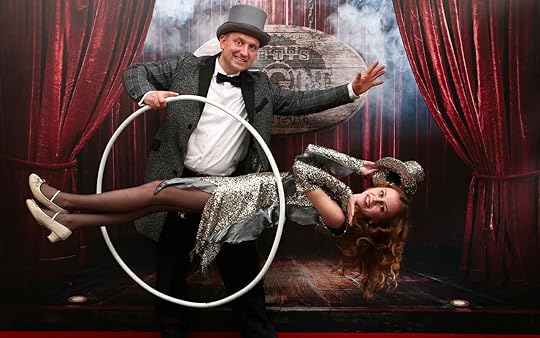
Magic is an example where logical and linear thinking is used to establish astonishing feats of creativity.
There are many books in the world of magic that demonstrate just how logical and linear true creative thinking needs to be. A few quick suggestions include:
Designing Miracles by Darwin OrtizShattering Illusions by Jamie Ian SwissIn sum, magicians often describe an illusion they want to create and then call it a “problem” they need to solve. There are often many possible solutions, and magicians use linear thinking to find the best possible strategies for creating the illusions, both as individuals and as communities.
The community aspect is part of what can make their linear thinking seem alinear. Different magicians sometimes arrive at various solutions independently and only work out later how to attribute “credit” for the solution to an illusion. This process sometimes creates controversy in the magic community, but they typically use logical reasoning to sort things out charitably in the end.
Understanding the Linear Thought ProcessWith all these definitions in mind, let’s look at linear reasoning as a process.
Typically, we use reasoning to solve problems. One of the best ways to start is by gathering as many possible solutions as possible.
This stage of the process is called divergent thinking. You’re literally focusing on quantity over quality.
During the convergent thinking process, you filter those ideas, combine and refine them.
Linear Thought Process ExampleI do this week after week on my blog, podcast and YouTube channel using mind mapping.
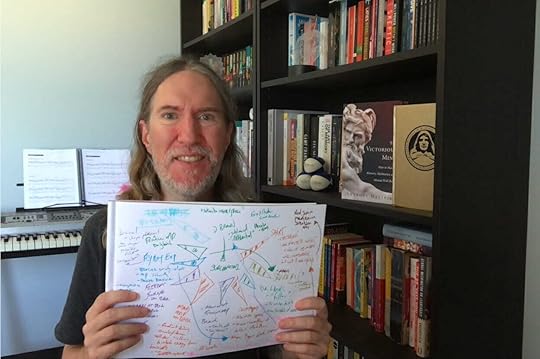
Mind mapping using linear and nonlinear thinking at the same time in order to help create multimedia content.
Using the topic as a central keyword, I move outward in clockwise formation. Each tributary is an idea that helps explain the central concept.
Once a set of divergent ideas have been collected, I let them sit for a while. And I often come back and add a few more ideas, stimulated by having the mind map in my environment.
Then, I converge the ideas into a linear outline. Finally, I write the article and record the audio visual component.
Ultimately, this is a linear thinking example even though it contains some alinear elements. Using a circle instead of top-down structure in the beginning makes it easy to incorporate arrows that show connections at a glance. If it were created in a document, it would wind up “locking” material onto individual pages.
Either way, the process unfolds over time and is much more linear as a result. And even if people consume my content “out of order,” they still take in the snippets according to the flow of time.
Linear AnalysisOf course, creating diverging ideas and synthesizing them through convergence is not enough.
Once you’ve arrived at the final product, you need to put it out there and analyze the response.
Depending on your field, there may be just a few diagnostic tools you use. Or you might need to combine dozens in order to get a picture of what the data is telling you.
When it comes to a mental performance activity like memory training, the metrics for analysis are usually quite simple. You have very few gray areas because you’ve either remembered something or you haven’t.
But you can test how much of a Memory Palace worked vs. how much gave you issues. And you can look at how many of the Magnetic Modes you used and chart out a path for improvement by making sure you also include more.
In the case of the mind mapping I use before creating content on this blog, I analyze multiple metrics, including:
How many people visit the contentHow long they interact with itHave they interacted with other content before and what kindsWhat part of the world they’re fromWhat time of day they visitedDid they leave comments or notDid they share or notBecause I have thousands of multimedia articles I’ve produced over the years and they are all live and online at the same time, the data pool is intense.
To help think through everything as thoroughly as possible, my team and I visualize the data by transforming the raw numbers into charts and graphs.

A linear reasoning example using a graph to help make decisions about content creation.
Using linear reasoning, it’s useful to think about what kinds of content to create more of and what to deemphasize.
Although this kind of data science sometimes leads to brutal decision making that temporarily feels like it’s squashing your creativity, that’s not really the case. True creativity comes back to solving problems like a magician in order to achieve your goals.
Expect in this case, there are no illusions and the success is real.
Linear Thinking vs. Nonlinear ThinkingAs we’ve seen, some scientists approach the definition of these two kinds of thinking quite simply. They divide logic and rationality from creativity and intuition.
But as I’ve shown, there are many creative arts that involve strict linearity in order to create innovations.
Ultimately, I’m not convinced that “nonlinear” thinking exists, if only because the stuff of thought unfolds in time. We not only think forwards, but also consume and interpret information following time’s arrow.
Plus, just because we might be consciously aware of having followed our intuitions, this does not mean that the unconscious mind that gives birth to intuition isn’t linear.
Although controversial, this was the great contribution of psychoanalysis, which boils down to the idea that a hidden part of our mind makes calculations on our behalf. One thinker, Jacques Lacan, argued that the unconscious is in fact structured like a language.
Symbolic ThinkingInstead of approaching it as the difference between linear and nonlinear thinking, he thought it was more a matter of deep structures and surface structures – but not quite.

Imagine that you have three different kinds of minds at the same time. One is tracking the real world, one is creating the world as it needs to be in order to avoid overwhelm, and the third is constantly tapping into a mind that symbolizes the entire species.
Lacan called these three kinds of simultaneous thinking:
SymbolicRealImaginaryMany cultures, philosophies, and thinkers have presented similar ways of describing thinking.
What makes Lacan’s interesting is how he discussed the impossibility of speaking the truth for human beings. We cannot represent the real in human language because, as he put it, there are simply too many words. We always have to choose a certain set of words at the expense of not using others.
Let’s face it:
Reality is not made of words, or at least it doesn’t seem to be. And no one has time to speak or listen to an attempt at arriving at the truth through words. It would take too long and there are too many potential words a person could use.
Yet, the brain uses imagination to help us approximate the experience of truth at a metaphorical level.
And the symbolic thinking level, sometimes called the “Big Other,” is a mental representation of the human species at large. If it exists, this “Big Other” helps us behave properly, according to this theory, because it creates the sense it monitors our every move. It helps us feel guilty when we transgress social codes and encourages us to follow the moral compass our cultural upbringing has helped us imagine.
In this way, we can say that there is a lot of nonlinear thinking going on, insofar as Lacan and similar thinkers are correct. Jung’s collective unconscious is another, similar model from the 20th century, and you can look to schools like Zen and Advaita Vedanta for earlier examples from different parts of the world. They all share the linguistic character of Lacan’s approach.
ParaconsistenciesAnother example of nonlinear thinking comes from the world of Dialetheism, a branch of logic. This term descends from the ancient Greek word for truth, and “di” means “two.”
In other words, we’re talking about two seemingly contradictory things being true at the same time without contradiction. A simple example is trying to quit caffeine for health reasons. You can both want and not want caffeine at the same time. Both states are true without any contradiction.
Where nonlinear thinking comes in is how you’re going to find strategies for one of those truths to win. If you want to avoid drinking coffee, for example, you have to think ahead of yourself to build strategies that prevent you from letting one truth out-truth the other.
Now let’s circle back to where we started:
It’s perfectly possible for linear thinkers to be creative and follow their intuitions in linear ways. You can analyze creativity in a linear fashion and reproduce the creativity of others by unfolding specific steps with the exact timing they used.
This kind of analysis is possible in just about every field of performance, from martial arts to chess, music, philosophy or learning a language.
Thinking from No Point Of ViewA.W. Moore is a highly accomplished philosopher who thinks it is possible to think from no point of view at all.
This is the subject of his excellent book, Points of View.
One issue more raises involves the fact that some knowledge cannot be put into words. He talks about physics and how it uses symbols to represent truths about how the universe works.
But there is more. We have knowledge about our own experience and what it is like to be alive. Yet, this experience is “ineffable” and impossible to describe. Jacques Lacan would say that there are too many possible words for any individual to even get started explaining the experience of life.
The paradox Moore is gunning for is that we know what life is, yet when we try to describe it, either nonsense comes out or we can only get at part of the description. Although Moore does not use the terms Dialetheism or paraconsistency, much of what he’s talking about gets at the same point. The only way to think linearly about complex issues like the nature of being is to allow for and even embrace contradictions.
And in order to do that, you need to change your point of view and turn toward the concept of infinity so you can at least try and experience what it would be like for all possible combinations to play out. As another philosopher named Gottfried Wilhelm Leibniz put it, “Everything possible has an urge to exist.” When we think about this from the perspective of infinity, which is from no perspective at all, it is possible for us to think in all possible directions at once.
You Are A Linear ThinkerAs a result, I feel we can all rest assured that each and every person is a linear thinker.
Certainly, you can go with the uncomplicated science story that divides the two. But the research we looked at above is ultimately inconclusive and seems to contradict itself. At best, it reveals a paradox, which we have used linear thinking to identify as a paraconsistency.
If nothing else, I hope you walk away from this article with a new way of thinking about thinking itself.
I realize that some of these ideas are complex, so if you’d like to understand them better, here’s why I suggest.
Learn to improve your memory. The more memory power you have, the more you can rotate these ideas around in your mind and experience deep knowledge.
For that, I have a free memory improvement kit you can sign up for here:
Give it a try and just take it one step at a time.
The more you think about memory itself in a linear fashion, the more you’ll be able to experience and use your mind in both linear and nonlinear ways.
Even better, you stand a chance to go quite beyond this world of name and form as you experience the unfolding plane of thinking itself.
After all, thinking is what we use to solve problems. And what bigger problem do we have than solving, like a magician, the mystery of why anything exists at all?
If just one of us can do that, perhaps all of us can be free.
April 6, 2022
How to Stop Forgetting Things Once and For All
 Why do I keep forgetting things?
Why do I keep forgetting things?
I’m an internationally acclaimed memory expert, after all.
The answer is actually very simple, and it will probably surprise you.
But even better than shock and amaze you, I think the answer will help you tremendously.
You see, there are some incredibly simple techniques that will help you remember just about anything you want.
And when you do forget, your annoyance with losing track of the information will completely disappear.
Follow the steps on this page, and you may wind up never being bothered by forgetfulness again.
Ready?
Let’s dig in!
Why Do I Keep Forgetting Things? The AnswerForgetting plays an important role in human experience.
And yet, some people have doubted that forgetting actually exists. For example, Friedrich Nietzsche wrote:
The existence of forgetting has never been proved: we only know that some things do not come to our mind when we want them to.
Nietzsche clues us in on something very important with this quote:
In order for things to come to mind, they need to have entered the mind in the first place.
My point?
It’s this:
One: Not Paying Attention in the First PlaceA major reason we think we’ve forgotten things isn’t a reason at all. If we haven’t paid proper attention to a detail, then it never entered long term memory in the first place.
It can be humbling to admit that we haven’t been attentive. But it’s one of the keys to experiencing improvement, as we’ll discuss in a moment.
Two: Storage FailureLet’s say that you did pay attention, however.
It’s possible that a memory was formed, but it was nonetheless not stored correctly.
This can happen because incoming information often has to compete with other stimuli. For example, when you’re meeting new people, you might also be given details about where they live and their occupation.
Another term for this is cue overload. As a result, the flow of multiple data points somehow corrupts how the main detail you wanted got stored.
John Wixted outlines a few different kinds of interference. In addition to competing stimuli, you might also experience storage failure from:
Proactive interferenceRetroactive interferenceThe first happens when something you’ve learned before messes with the learning of something new. For example, if you learned something that was incorrect in the past and discover a correct version of that fact, the primacy effect might maintain the storage of the inaccurate data despite new learning. Your brain thus fails to store the truth.
The second kind of interference happens when something about the way you’re learning a new detail interferes. You might experience this kind of storage failure when ineffectively using a software like Anki or even old-fashioned flashcards.

Let’s assume that your brain has recorded everything absolutely correctly.
You might still forget something if something interferes with the retrieval process. These kinds of interferences can literally cause information you know very well to evaporate.
Scientists have found this kind of forgetting interesting, but don’t yet know exactly why it happens. Endel Tulving linked it to cue-dependent forgetting. The research basically suggests that if words are grouped in categories, you might remember more of them better. But when randomness is introduced, forgetting goes up.
Part of the issue relates to how memory works, particularly spatial memory. And that’s why when someone prompts you or gives you a trigger that relates thematically or categorically, you can sometimes get back the information that you forgot or felt lingering on the tip of your tongue.
Four: The Influence of TimeDid you know that it’s possible to forget your mother tongue without suffering a brain injury or symptoms of a disease?
The problem is called linguistic deskilling. I experienced it myself while living in Germany and speaking hardly any English.
Basically, this kind of forgetting follows the “use it or lose it,” principle. Or, more scientifically, we can think about the forgetting curve, which helps predict how time will degrade the ability to remember things if they aren’t recalled regularly.

Sigmund Freud is a controversial figure. But many people forget the value of his goals.
For example, in Remembering and Forgetting Freud in Early Twentieth-Century Dreams, John Forrester reminds us that psychoanalysis was meant to be “self-annihilating.” When it worked, the point was never to need it again or even think about it.
To help heal people from their ailments, psychoanalysis explores ways to uncover repressed memories. The theory goes that because these memories are still lingering in the unconscious mind, they are trying to “return” so that you’ll attend to them. This is the so-called “return of the repressed” that has been so influential on the horror genre in novels and film.
More sophisticated psychoanalytical research has extended the notion of repression to a kind of filtering. Dr. Robert Langs, for example, influenced many practitioners with his suggestion that the unconscious prevents certain “threats” from getting noticed by the conscious mind.
If true, his theory explains why we are sometimes told by our partners and loved ones critical details. We not only can’t remember the details. We can’t even remember being told. For whatever reason, the unconscious mind has perceived it as a threat and completely filtered it out.
Six: AdaptationAnother reason people forget is that some information is simply deprecated.
For example, there’s zero reason for me to remember the phone number my family had when I was 7 years old. I can remember our area code, but that’s because the information is still useful. The actual phone number, which hasn’t been used in decades, is not.

I also can’t remember the exact number of the house, though I can still remember the street name. Again, this kind of forgetting happens because specific details are no longer useful. I still refer to that street and the entire neighborhood when using a Memory Palace, but the exact house number has no particular function.
How to Stop Forgetting Things Once and For All: 7 TipsNow that we’ve looked at the many reasons why we forget, let’s remove the problem altogether.
I said that the solution might surprise you, and I’m confident it will.
When you operate in this way, I think you’ll soon be completely unbothered by forgetting, even if it still happens from time to time.
Tip One: Pause, Label, Carry OnI give many presentations. Even though I’m a memory expert who exercises my mind regularly, I still forget things. I probably forget things more than the average person because I present off-the-cuff so often.
Over the years, I’ve learned that the best thing to do is to simply call a spade a spade. Specifically, I do this:
Pause to give myself a second to see if I’ll remember the detailIf I don’t, I label it as “yet to come” and state, “it’ll probably come to me in a second”Carry on with the presentation or conversationI don’t have an exact percentage, but much more often than not, the information I was looking for will suddenly pop into my mind.
Tip Two: Run the AlphabetAn alternative strategy I’ll use when I really want to remember a detail is to start reciting the alphabet.

This strategy isn’t as foolproof as the first tip, but can still be effective. It’s also great mental exercise.
The reason I think it works is that it tackles the Ugly Sister Effect head on. Instead of getting overwhelmed by many possible names of actors or whatever you’re searching for, you actually cause your brain to run through a list in a structured manner.
As an example, let’s say I’m trying to remember an actor’s name like Tom Cruise. If it doesn’t come to mind, I’ll start silently naming actors I can remember by starting at A. (Adam West… Bill Murray… Christian Bale…) etc.
Give it a try the next time you forget something.
Tip Three: Memorize a Wide Variety Of Information TypesAlthough I do still forget things – usually temporarily – one thing I believe helps reduce this from happening is memorizing multiple types of information.
In your personal memory practice, I recommend you balance your time by practicing memorizing:
VocabularyNumbers using the Major SystemVerbatim material like scripture or a speechSymbolsMusical information like the key signature or notes on a guitarFigural elements like the shapes and colors in paintingsTip Four: Use a Memory Palace NetworkSimply the best tool for exercising your memory is a technique called the Memory Palace.
Basically, you bring rooms that you’re familiar with to mind and then imaginatively layer associations on the walls and furniture. These associations help you recall things in turn.
It’s fast, fun and like a video game you play in your mind.
If you’d like to learn it, give this free course a try:
Make sure to use your Memory Palaces in combination with Recall Rehearsal for best results.
Tip Five: Creative RepetitionAnother major reason people forget things is that they use rote learning.
Not only does rote learning suck the life out of engaging with information. It’s been shown to harm your ability to think critically.
The alternative is creative repetition, which involves elaborative encoding and following the rules of active recall.
As a quick example, to help remember that ALF is an acronym for “accelerated long term forgetting,” I will:
Imagine Alf from the show about an alienHear his voice in my mindCompound in an image of Alfred, Batman’s butlerLayer in the feeling of holding a butler’s tray in my hand and forgetting it’s thereFeel Alf’s emotional reaction to the horror at forgetting such an objectImaginatively taste and smell the coffee on the trayThen, when mentally recalling all of these details, I’ll trigger those different creative sensations. Operating this way encodes memories so much faster and more thoroughly for the long term.
Tip Six: Focus On Laser Specific Learning GoalsSome people are so focused on having it all that they can’t think analytically about how the universe really works.
In reality, we only have so much time and no one has to remember everything about any single topic.
Instead of trying to have it all, focus on well-selected and carefully formed learning goals. There’s an art and science to how to select and create such projects, so you might want to check out Read with Momentum for information about how to do that.
Specificity is itself a memory aid. The goal is to create a strong network of references. These help you trigger off the information you want to remember because the knowledge web is tight by design.
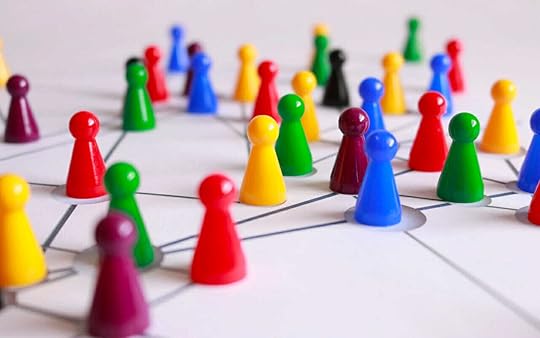
There’s another reason specificity is so important.
You’re here because you searched for how to stop forgetting things. The problem is that this term could mean anything whatsoever.
A sure fire to forget more is to learn and live in unstructured ways. But when we focus our memory training on dedicated outcomes, our results are astonishing.
Tip Seven: Value ForgettingAs you’ve discovered, we forget for a variety of reasons. Some of them are normal and healthy, such as information that will never be used again.
If we couldn’t forget, we’d probably experience torture. Jill Price’s experience should be a wakeup call to anyone who fantasizes about having photographic memory, for example.
There’s another reason I value forgetting:
If I didn’t forget from time to time, I wouldn’t have discovered the tips you’ve learned today. And I wouldn’t have been able to find ways to improve my personal use of memory techniques.
As a result, it would be fair to say that forgetting has been more valuable than remembering in many ways.
So, what do you say?
Was Nietzsche right? Has forgetting never been proven to exist?
Or does it have a healthy place in our lives?
Although I take Nietzsche’s point and find it useful as a philosophical question, it’s clear to me personally that forgetting is a powerful asset.
And whenever we want to remember? We can. We just need to use the tools and strategies that work.
March 30, 2022
11 Brain Exercises That Ensure Memory Improvement
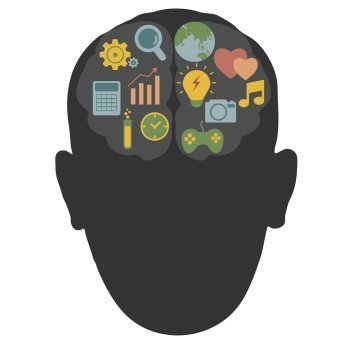
Lots of people do brain exercises, often in the form of brain games.
You’ve probably even tried a few, right?
That’s all fine and dandy, but there’s a catch:
Playing mental exercise games on your “smartphone” is not necessarily brain exercise.
It might not even be mentally stimulating.
Not by a long shot.
But don’t worry.
I’m about to reveal some memory exercises that actually work. That’s because they really do exercise your brain. I’ll show you how to put them into action and also help you understand why they boost brain health.
Yours Free: A Private Course With Cheat Sheets For Becoming A Memory Master, Starting From Scratch.
>>> Click Here For This Special Free Offer.
To help you navigate this post, here’s a preview of what you’re about to discover:
Brain Exercise and Memory Exercise? – What Makes Them Good?The 11 Best Brain Exercises For Memory ImprovementWhat Is The Best Brain Activity For You?How To Stimulate Your Brain To Be Smarter and FasterHow To Improve Concentration And FocusBrain Exercise And Memory Exercise? – What Makes Them Good?Let’s face it:
Smartphone-based brain games don’t exercise your brain at all.
Any exercise you get is quickly wasted on the ads you’ll be shown and tracking graphs that no robot can accurately help you understand.
Instead of helping you, brain game apps train you to get good at completing tasks within the world of those apps. This is called context dependent memory.
Any mental fitness you enjoy from such software rarely applies to the aspects of your life where you need to be sharp, such as during conversations or on the job.
Bottom Line: Use Concrete Brain Exercises And Avoid Abstract OnesIf you’re exercising your brain on an abstract level but not directing the fitness at specific life improvement goals, you’re missing out. Your brain fitness must be targeted at specific goals to get tangible results and avoid cognitive decline.
Real brain exercise must also follow these four rules:
It always involves new learningIt is always reasonably complex (and sometimes unreasonably complex)It is always varied and interestingIt is always engaged in frequentlyWithout following these rules, it is unlikely that the exercise will improve your memory.
But on this page, I promise you will experience a number of fun exercises that stimulate both short-term memory and long-term memory.
Ready?
Let’s get started!
How to Exercise Your Brain: The 11 Best Brain Exercises For Memory Improvement1. The 4-Details Observation ExerciseGary Small talks about memorizing four details of people you encounter out in public.
For example, let’s say someone is wearing a black hat, has blonde hair, a triangular ring, and a green sweater.

Illustration of the 4 Details Exercise
The goal is to observe the details first and then recall them later.
Some scientists call memory exercises like these “passive memory training.”
They’re passive because you’re not using any special memory techniques. You’re just asking your mind to do what it was designed to do: to remember.
Why does this matter?
It matters because we don’t ask our minds to practise observation enough.
Because we don’t practice observation, we fail to observe and receive the memory exercise simply asking our brains to recall information brings.
We also fail to observe things that we aren’t seeing – making it impossible to make mental pictures of them. I teach you all about how to do that with these 3 simple visualization exercises.
If you’d like to be a better observer of the world around you, noting and visualizing details will help far better than brain training software like Cogmed.
It’s also scalable. You can start by observing just one person per day. Once you’ve gotten good at recalling four details of just one person, you can add more information or more people (or both).
You can scale this memory exercise even further by memorizing the details using a Memory Palace.
If you like, you can also notice details about buildings, cars, movies or series and foods that improve memory to boost your cognitive abilities.
But focusing on real people is the more potent memory exercise. Being observant of others around you is a great social skill.
2. A Number Exercise That Will Skyrocket Your ConcentrationI can’t emphasize this enough:
Numeracy is a powerful skill to boost your cognitive abilities. It’s something I work on to boost logical thinking – both with and without memory techniques in play.
“Add 3 Minus 7” is a fun numerical memory exercise you can try today. To get started, all you do is pick any 3-digit number. Then, add 3 to that digit 3 times. Then minus 7 from the new number 7 times.
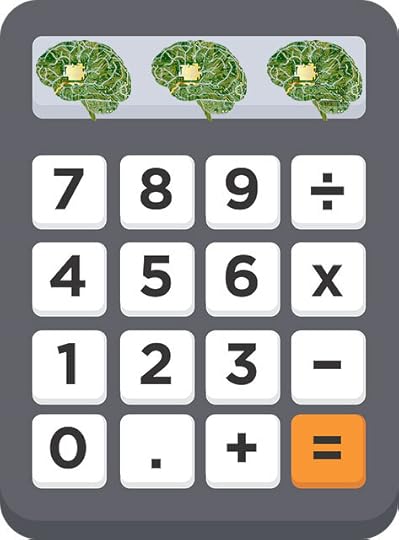
Repeat the process at least 5 times and pick a new 3-digit number the next time. You can also take a different route and start with a 4-digit number and use other numbers to challenge your working memory further.
For example, you could start with 1278 and add 12, 12 times and minus 11, 11 times.
It’s up to you and the amount of numbers to dictate the level of challenge. Remember, this brain exercise strengthens your working memory because of the amount of detail you need to hold in mind to complete it.
Yours Free: A Private Course With Cheat Sheets For Becoming A Memory Master, Starting From Scratch.
>>> Click Here For This Special Free Offer.
In a book called Happiness Beyond Thought, Dr. Gary Weber shares a powerful means of experiencing your conscious mind directly.
It sounds deceptively simple, but it’s actually quite a challenge.
To complete the exercise, you count from one to ten.
But instead of visualizing each number, you skip the even numbers on the way up.
By “skip,” you don’t count 1, 3, 5, etc.
You actually pause on where the even digits should be. But you actively try to not represent them.
There are a few variations on this technique, so if you want more nuance, give this tutorial a view:
https://www.youtube.com/watch?v=p7NPi...
Important Tip: Don’t make the memory exercise so easy that you get bored with it. We all need challenge from our brain exercises in order to grow.
You can also skip using the alphabet by exploring a Renaissance brain exercise called The Field:
https://www.youtube.com/watch?v=eRFNX...
5. Repeat What People Say In Your Mind
We all know in our hearts that no one is really listening when we speak. And that’s sad.
But here’s the good news:
You don’t have to be another person who is just nodding your head like a puppet while actually thinking about something else.
You can train your brain to focus on what people are telling you and remember everything they say.
It all begins by creating presence in the moment in an easy way:
Follow the words being spoken to you by repeating them in your mind.
For example, imagine that someone is saying the following to you:
“Tomorrow I want to go to a movie called Memory Maverick. It’s about a guy who cannot forget. He’s hired by a group known only as ‘The Agency’ to infiltrate a competitor. But once the hero learns the secrets, he doesn’t want to hand them over. But since he can’t forget, The Agency starts making his life miserable.”
All you would need to do to complete this brain exercise is repeat everything the person is saying silently in your mind. You’ll automatically boost your cognitive function and remember more by doing this.
It works because simply asking your memory to recall information exercises it. The more challenging the information, the more exercise your brain will get.
5. Visualization Exercise Secrets Of A Memory MaverickTo remember even more, you can practise creating pictures in your head.
But go beyond the visual. Also add in multisensory elements.
For example, using the sample conversation above, you might see an image of Mel Gibson as he looked in the movie Maverick trying to remember something. Imagine that you are trying to feel what this is like as if you were Mel Gibson yourself.
Or you might get a picture in your mind of an agency building and scenes of evil men in suits torturing the hero. Feel their clothes on your skin. Smell the air through their nostrils. Hear the world through their ears.
For more cognitive exercises on remembering what people are saying with visualization practice, check out this interview with Jim Samuels on the Magnetic Memory Method Podcast. He has some great ideas, and the benefits include:
Being more present.Remembering more of what was said.Showing people that you’re interested in them and their lives.Easing conflicts when they arise because you remember the issues in greater detail.As people speak, they “translate” their ideas into pictures, feelings, related concepts and even tastes and smells.
Take this training seriously:
You’ll feel better about your connection to people because you’re really with them.
6. The Metronome-Clapping ExerciseBack in grad school, I had a great professor named Matthew Clark. For some reason, he told our class in Classical Literature about a great concentration exercise that I’ve practiced ever since.
It’s simple: You put on a metronome at a slow speed and then practice “covering the click.”
Such neurobic exercises can help us focus on things that our brains have been automated to perform. The increased focus that neurobic exercises develop helps you zero-in on your surroundings to boost your memory skills.
If you’d like a practical example of the metronome exercise on video, please check this out:
https://www.youtube.com/watch?v=qaiF3...
To be clear:
I don’t think this memory exercise helps memory in any direct way.
But it is excellent for improving concentration and presence.
Here’s why these mental states matter:
Both concentration and presence are cognitive skills we all need. The more concentration and presence we have, the more we can remember by default.
The better you get at this mind exercise, the longer the amount of time between clicks you should place. Accurately covering the metronome with a minute between clicks would be impressive!
7. Create A Memory PalaceThe ultimate brain exercise to boost overall cognitive function is also the easiest. It involves nothing more than a simple drawing that follows some simple principles.
What’s a Memory Palace?
It’s a mental recreation of a familiar location. You use it to chart out a simple journey that you can follow with your mind.
Then, using associations, you “place” mental images along this journey that help you remember things.
Why is creating a Memory Palace such a powerful memory exercise?
First, complete my FREE memory improvement course and find out for yourself:
Second, creating a Memory Palace draws upon your spatial and visual memory.
It’s also a great recovered memory and autobiographical memory exercise.
As far as mind exercises go, the Memory Palace training exercise works kind of in reverse.
Why?
Because you’re accessing visual memory cues that are usually blueprinted in your mind outside of your awareness.
Think about it:
You’ve rarely gone into a new home or store with the conscious intent of memorizing its features.
Yet, if you think back to the last home of a friend you visited, here’s a fact:
Most people can recall an insane amount of detail with visual memory. Creating a Memory Palace lets you exercise that inborn ability.
You can even use it for memory and learning stunts like memorizing all the Prime Ministers of Canada.
Second, creating a Memory Palace is creating a tool that you can use for life. Once you have one and you’ve mastered using it, you can create dozens more.
And if you can do that, you can do great things with your memory, like how Matteo Ricci learned Chinese in record time. You can also at events and accomplish any memory-associated goal.
And what goal doesn’t involve memory?
8. Learn a Foreign LanguageYou’ve probably heard that bilingualism is good for the brain, right?
It is, and one of the reasons why is that you are continually asking your brain to recall information.
Take advantage of your brain’s neuroplasticity and learn a new skill at any age to keep it active and ticking!
This is a great brain exercise for people of any age because it keeps you talking with people.

Regular conversation also helps stimulate the production of healthy chemicals for better mental health. Ideally, you would have conversations about books you’ve read. That way you dig into memory at multiple levels, especially verbal memory.
But if you don’t like to talk, you can also sing. Or do both. For a double-whammy of health and brain benefits, singing has been shown by researchers like Gunter Kreutz to increase cortisol and other chemicals involved in healing.
For this reason, singing in a foreign language you’re learning can increase the impact and effectiveness of this brain exercise.
However, that isn’t all – you get more health benefits.
Researchers conducted a study that found that learning a second language can delay the onset of cognitive impairment like dementia in Alzheimer’s disease by around 4-5 years!
The best part?
Learning anything new is good for your brain!
Whether it’s learning to play a new musical instrument or working with your non-dominant hand, new neural pathways will form – helping you boost your brain power.
9. Mind Mapping For Maximum Brain HealthIt’s no secret that I’m a huge fan of Tony Buzan’s approach to mind mapping.
And that’s because I used to mind map in ways that weren’t effective at all.
But after training with Tony and world mind mapping champion Phil Chambers, I discovered a new route and I’m way better at the practice and share it in real-time on my YouTube live streams:
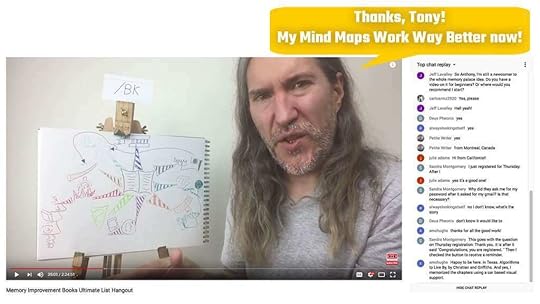
What is mind mapping?
It’s a graphic means of brainstorming and planning. You can even use it for note taking and review.
The question is…
Why is mind mapping great for boosting cognitive function?
One reason Tony Buzan hints at is very compelling. The process reproduces the role of nerve cells on the paper.
Think it through:
Just as a brain cell has a central nucleus with synapses that flow outward like a river, the mind map has a central idea that feeds several streams with mental power. By creating mindmaps, you’re making it easier on your brain – thereby increasing its processing speed. Just like more water increases the flow of a stream.
Interested?
Give these 10 mind mapping rules a try whenever you want a cognitive training workout.
Yours Free: A Private Course With Cheat Sheets For Becoming A Memory Master, Starting From Scratch.
>>> Click Here For This Special Free Offer.
I love physical activity like aerobic exercise.
And not just to workout my muscles and boost my heart rate.
Physical activity is a great place for including a mental workout.
For example, you can memorize the number of sets and reps you complete using the Major System.
You can also rehearse the content in your Memory Palaces during and after your workout. I often recite Sanskrit I’ve memorized or perform number skipping while I’m at the gym.
11. Memory-Based MeditationDid you know that you can clear out old memories that you’d rather not have?
You can even help reduce symptoms of PTSD and depression.
These outcomes are produced by creating a “Happy Memory Palace.”
I started doing this after reading Tim Dalgleish’s research on using the method of loci to help heal the mind.
For this exercise, you’ll need a Memory Palace and 5-10 happy memories. Then, along the journey, you’ll place each memory in a strategic location.
In my Happy Memory Palace, I used a small office I had when I was a graduate student. On the first corner, I placed a memory of when I graduated with my PhD.
https://www.youtube.com/watch?v=vs9UH...
Then, when I feel down, I revisit this Memory Palace and start feeling better quickly. The trick is to keep creating these Memory Palaces. When something good happens to you, the brain exercise is to transport it into a Memory Palace and revisit it often so that the memory sticks.
What Is The Best Brain Activity For You?At the end of the day, memory exercises are best when they’re applied to problem-solving in our daily life.
For example, forgetting important details can turn our lives upside down.
You can now choose a brain activity that can help prevent memory loss while showing you how to be happy and positive.
Not being able to focus on numbers leads us to making all kinds of mistakes that prevent us from memorizing information quickly. The simple game you’ve just learned is just one step towards improved numerical memory skills.
You’ve also learned to listen better, be more present and develop concentration for extended periods of time.
In many ways, repeating the words of others in your mind or “covering the click” can help you meditate and practice mindfulness – skills known to improve memory.
But what matters above all is that the best memory exercises are the ones that you actually use. If sudoku is what works, then go for it. If it’s brain teasers – then that’s fine too.
Remember, you cannot get the benefits from them without consistent application.
Yours Free: A Private Course With Cheat Sheets For Becoming A Memory Master, Starting From Scratch.
>>> Click Here For This Special Free Offer.
Now that you have this pile of authentic exercises, consistency is the key.
In order to show up regularly enough, I recommend that you start tracking your time.
That’s right. Instead of making a to-do list that you’ll probably ignore, start by writing down where you time has gone on a day by day basis.
For this, I like to use a Snapshot Journal.
These are wonderful tools because you can keep them on your desk and see them every day. They remind you of your goals for you.

The Snapshot Journal I’m using
You just fill them out with what you’ve accomplished during the day, and each day gives you a reminder of how far you’ve come. You can see your progress for up to five years at a glance.
I haven’t missed a day and am in my fourth year now of the current Snapshot journal. It’s wonderfully fulfilling to see all of the many accomplishments build up over time.
How These Free Brain Games For Adults Improve Memory and ConcentrationFor example, thanks to constantly reminding myself of my goals, I’ve found time to practice juggling, writing with both hands and writing backwards to involve both my brain and body.
As you can see in this brain exercise challenge, I’ve managed to bring both worlds together in a way that is easy and fun.
You can also get out to art galleries. Then, exercise your memory by recreating a painting in your mind. I’ll walk you through this exercise here:
https://www.youtube.com/watch?v=uJbRK...
Not only will you get a great memory workout. Visiting an art galley gives you physical exercise too.
The Truth About How To Improve Concentration And FocusIt’s not just about concentration exercises.
It’s also about making sure we don’t fall into the traps of smartphone and video game addiction.
Sure, you can get some great brain fitness reading from the Kindle app or solving online crossword puzzles. Maybe you excel at Nintendo’s brain age game.
But if you’re constantly interrupted by notifications on your reading device, you’re damaging your focus and concentration more than helping improve it. Memory exercises truly require the right environment.
Brain Rehabilitation Exercises For Overcoming DepressionJust so you know, the reason I’m so passionate about sharing my knowledge about how to improve brain function, it’s because these activities saved my life.
I once nearly lost my life. But these exercises helped save me along with general memory improvement efforts, like those I discuss in my book, The Victorious Mind.
You might also want to consider learning more about vitamins for memory improvement because the ones you’re taking now might be causing more damage than good to your cognitive health.
If you’re looking for information on how to boost brain activity, definitely add dietary considerations to your neurobic exercise routine.
https://www.youtube.com/watch?v=2MlDe...
Summary Of The Most Potent Brain ExercisesThe 4-details mental workout is excellent for “passive memory training.” Number exercises result in better working memory, an increased attention span and greater numerical memory skills.Repeat and Recall exercises also increase your concentration and ability to pay attention to others for longer periods of time. You’ll also remember more.Create images, associations and other related sensations as you listen to people speak. This will create intense brain fitness to reduce the chances of memory impairment.The Metronome exercise. This simple device can be found at any music store or downloaded as an app. “Covering the click” has many mental benefits and provides a fun challenge as a solo effort or group activity. You can perform such neurobic exercises several times a day.Create and use Memory Palaces. Both of these activities create a lot of mental exercise.Learn a language consistently over time. It might not feel like brain workout, but it is and the benefits of being bilingual provide ongoing mental benefits. These include helping with Alzheimer’s disease, dementia and cognitive decline associated with brain age.Mind Map. There are many interesting rules you can follow to maximize the process. Following them is part of what creates the mental benefits of this creative brain game.Use memory techniques while getting physical fitness. Using your body and mind at the same time maximizes your time and is a win-win for total psychological and physical optimization. Don’t forget to sleep enough, though!Brain exercises must follow the four rules outlined above in order to qualify.Improve Your Memory With GamesWhat are your thoughts about the brain exercise principles discussed in this post? Are these amazing free brain games, or what?
Do you think these are activities you will bring into your life? Did you develop better memory? Is there anything I’m missing?
Let me know in the discussion area below and I’ll gladly respond and update this post.
In fact, for more brain training games that really improve your memory, please read Brain Games: The Truth You Need To Know For Memory Improvement.
Or, if you’d like more practical, hands on help, join my…
Brain Exercise Bootcamp!

This exclusive training comes packed with over 40 brain and memory exercises. You’ll be taken step-by-step through everything you need to create a detailed program of fitness that keeps you focused and sharp for life.
So if you enjoyed the 11 memory exercises on this page, don’t hesitate to dive in deeper and enjoy 40 more! Take your brain for a spin!





